
Phone Login
Looks like you already have an account with this ID. You can try logging in
Forgot password?
Back to login
Register Now
This Email id already exist please try loging in
Create an account to find courses best suited to your profile
- September 26, 2022
Best HR Case Studies
Drop your details to know more about programme
- Mobile Number *
- State * State* Andaman and Nicobar Andhra Pradesh Arunachal Pradesh Assam Bihar Chandigarh Chhattisgarh Dadra and Nagar Haveli Daman and Diu Delhi Goa Gujarat Haryana Himachal Pradesh Jammu and Kashmir Srinagar Jharkhand Karnataka Kerala Lakshadweep Madhya Pradesh Maharashtra Manipur Meghalaya Mizoram Nagaland Odisha Puducherry Punjab Rajasthan Sikkim Tamil Nadu Telangana Tripura Uttar Pradesh Uttarakhand West Bengal
- I accept Terms and Conditions
Last date of application: 14/07/2022
HR as a function has undeniable importance from a business management perspective. With the advancement in technology, 2022 saw a huge technological shift in this aspect of business management as well. Apart from digitizing all other business aspects, organizations have begun to incorporate technology and data into HR practices as well.
HR Analytics Case Studies with Business Impact and its benefits are listed below:
An american mnc reduces attrition using people analytics and forecasting.
Case: This American MNC is a client of PeopleStrong and is suffering from a high turnover of employees at five locations. The company intended to install analytics in order to evaluate the main drivers of attrition and do forecasting for their occurrence at different business locations.
Solution: An integrated tool for workforce analytics was created and implemented. This tool could capture attrition results and their drivers and do a forecasting based on trends.
Also Read: Executive Development Program In Human Resource Management From XLRI Jamshedpur
Result: The forecasting report predicted that 500 of the 5000 employees were going to quit in the next 6 months. Better employee retention policies were designed which included rewards and incentives apart from better people strategies. Even though 250 people still left, the figure was 50% lower than the prediction.
Under Armour digitized employee recruitment and enhanced employee experience
Case: Under Armour, an American organization dealing with the manufacture of sports and casual apparel and footwear, is a global company. With more than 130 global outlets and 8500 employees, their ATS system received more than 30,000 resumes in a month. Thus, hiring was a cumbersome process for them as well as candidates applying for a job.
Solution: They engaged in a digital recruitment system called Hirevue. With Hirevue, managers could create interviews with candidates with the help of pre-recorded questions. This screening process helped managers call in only employees who met their requirements for webcam or mobile recorded interviews.
Result: Managers could now hire new employees much more quickly. There was a 35% reduction in time in the overall interview to the hiring process. Talent quality also improved.
These above case studies show the emerging trend of incorporating analytics in the HR function of business management . This can also be seen to have positive results in the recruitment and retention processes.
Human resource management is quite a recent term. Employees are treated with a lot of respect and regard nowadays compared to earlier. There were times when workers were considered to be expendable and they had few rights. Working conditions were miserable and people had no say in how organizations are operated or in the way they were treated. The industrial revolution is what brought changes. Companies started realizing that keeping employees loyal was essential for running businesses smoothly.
Caring For Employees During The Industrial Revolution
Courses for human resources certification online teach that before the industrial revolution there were hardly any large industries and a need for managing workers was not felt. Working conditions were dangerous for them and pay was hardly commensurate with what work they did. In the late 1900s, companies like the UK-based Cadbury and Jacob from Ireland appointed welfare officers. These firms introduced a system of payment during sick leaves and cheap housing for employees.
Also Read: Executive Development Program In HR Analytics From XLRI
It was F W Taylor during the early twentieth century who introduced a system for managing staff. He believed that people could be trained to become experts in certain jobs. The famous carmaker Ford adopted his methods. Tools in manpower management like job analysis, employee selection procedures, and training methods were introduced during this period. Certain fast food organizations also adopted Taylor’s theories. His mistake was that he did not think people can get bored with doing the same job.
Employee Management During The World Wars
Two events that changed many things for us are the first and second world wars. Employee unions had been formed during the first world war. As men went to fight wars, women came to be seen more in workplaces. In your HR training certification by IIM Raipur , you will learn how companies had to think about managing workers and form new rules. Recruitment, dismissal, bonus, and absence from work came under the scope of manpower management.
Researchers like Elton May opined that factors like motivation, job satisfaction, leadership skills, and group dynamics could influence performance. The improvement in the economy after the war saw many firms adopting a more flexible approach to staff members. Big companies used employee benefits to lure and retain people. Personnel and welfare work was in full swing during the second world war, but it was done in a bureaucratic style as government-run firms influenced law-making.
The Post-War Scenario
The 60s were not good times for industrial relations as it was found that none of the entities involved in negotiation had skills to discuss issues of employees. As the decade came to an end, employment opportunities improved, and along with this, people management techniques began to be used. When you study human resources certification online courses you will know that terms like motivation, organizational behavior, and management training were heard more commonly.
Also Read: Executive Development Program In Talent Management
In the seventies, much was talked about rewarding employees. The next two decades saw economies sliding and companies becoming less profitable. But it was also then that many organizations realized the importance of retaining people. They began looking at workers as an asset that must be taken care of if the firm wants to have an edge over competitors. Humans started to be regarded as resources that need to be effectively managed. Human Resource Management was born.
The Nineties To Now
It is no more only personnel management and administrative tasks for workforce heads. The HR training certification by IIM Raipur will tell you that it is more about employee engagement and development that people managers are tasked with now. Human resource departments are strengthening the culture in an organization and finding people who can fit that environment. They are also tasked with ensuring that every employee gets an opportunity to use his or her talents for the benefit of their companies.
Also Read: Why is it Important to Study Human Resource Management?
HR managers are more focused on workers than on processes. This department is also gaining more importance as management’s realize a need to attract and retain the best talents available in the market. HR leaders find themselves among the C-suite as their role in getting the best out of employees is increasing. They must understand the needs of a more diverse, multicultural, and multigenerational workforce and ensure to fulfill them. Retention of good hands has assumed much importance nowadays.
The Future Of HR Management
The human resources certification online courses will teach that it is not just enough to employ and retain people, but they must also be trained and developed. The speed at which new technologies emerge, there is a need to keep employees abreast of modern developments. HR managers must continuously update themselves with modern technology and arrange training programs to empower workers with new skills. The journey of staff members in an enterprise will be that of continuous learning.
Acquiring best talents and retaining them will remain the focus of any progressive organization. People managers will have to find innovative means to attract those who are equipped with the latest skills required for a job. Engaging with prospective employees through social media platforms will be practiced by more HR heads. There will be increased use of automation for screening resumes and conducting initial interviews. This will speed up the process and reduce costs.
HR departments will be trying innovative methods to improve employee experience in the company. They will find out the requirements of the new breed of recruits. Learning opportunities will be improved. Promotions and salary hikes will no longer be based on experience or seniority. New procedures for evaluating employees will be used. Getting HR training certification by IIM Raipur will teach new methods that are used by global enterprises for appraisal and rewarding.
Looking at the evolution of human resource management can show you that there has been a shift from looking at employees as only a means to achieve company objectives, treating them as individuals, and satisfying their needs. There is a realization that it is equally important to ensure that their goals are achieved and these objectives are in line with that of the organization. HR departments will play a more important role as retaining good talent becomes crucial. Combining the human force with machines and using that synergy will be highly important in the future.
More Information:
Executive Program In Business Management
Professional Certificate Program In General Management
How to grow your career in Human Resource Management?
Executive Program In Supply Chain Management During Uncertain Times
Professional Certificate Program In Supply Chain Strategy And Management
Executive Development Program In Project Management For Senior Professionals
Want to know how can this course help in your profile?
Talk to our counsellors to find a course best for your career.
- Will get in touch with you soon
Let us call you back
We'll contact you asap.
- Select a Course Select a course Post Graduate Diploma In Finance Doctor Of Business Administration Doctorate of Business Administration Certificate Program in Applied Data Science and Deep Learning Executive Development Programme in Leadership in Sales & Marketing – The CMO Programme Postgraduate Certificate In Business Analytics B- 6 New Digital Marketing Job Linked Bootcamp Executive Development Programme in Strategic Decision Making in the Digital Era Professional Certificate Program in Health Care Management with immersion Advanced Certificate in Digital Marketing and Communication S4 Advanced Certificate in Digital Marketing and Communication S3 Advanced Certificate in Digital Marketing and Communication S2 Executive Development Programme in Applied Finance Executive Development Programme in Talent Management Executive Certificate Program in HR Analytics Advanced Certificate in Supply Chain Management MBA from Staffordshire Business School Professional Certificate program in Cyber Security Doctor of Business Administration in Emerging Technologies Executive Development Program in HR Analytics from XLRI B6 Executive Development Programme in Digital HR Transformation & AI-Driven HR Analytics MICA-MBMC-14-1223 Professional Certificate Program in Business Analytics B8 Professional Certificate Program In Marketing And Sales Management Executive Development Program in Advanced Financial Management MS in Full Stack Artificial Intelligence and Machine Learning MS in Full Stack Artificial Intelligence and Machine Learning MS in Full Stack Artificial Intelligence and Machine Learning Advanced Program in Strategic Management for Business Excellence -B4 Executive Certificate Program in Supply Chain Management and Analytics Master of Business Administration (MBA) Liverpool Business School -immersion MBA (Global) | Deakin Business School- With immersion Executive Development Program in Human Resource Management from XLRI Jamshedpur -B15(Copy) Advanced Certificate in Sales Forecasting and Demand Planning EXECUTIVE DEVELOPMENT PROGRAMME IN DIGITAL TRANSFORMATION STRATEGIES Executive Development Program in Human Resource Management from XLRI Jamshedpur -B15 Executive Development Program in Financial Analytics B-6 Full Stack Development Bootcamp Professional Certificate Program in Health Care Management Executive Development Program in Talent Management from XLRI- B12 Executive Certificate Programme in Advanced Strategic Management & Innovation Executive Development Programme in Driving Growth – The CXO Programme B-2 Executive Development Program in Project Management For Senior Professionals from XLRI Jamshedpur -B10 Ecommerce Supply Chain Management and Analytics Professional Certificate Program in General Management Batch 6 Master of Science in Computer Science Master of Science in Data Science Executive Post Graduate Programme in Machine Learning & AI Executive Development Programme in Strategic Marketing Management (Batch 2) Advanced Certificate Programme in Big Data Programming Advanced Certificate Program in Devops Advanced Certificate Programme in Cloud Backend Development Advanced Certificate Programme in Blockchain Executive Development Programme in Strategic Brand Management -B2 Advanced Certificate Programme in Cyber Security Executive Program in Supply Chain Management During Uncertain Times -B3 Executive Program in Marketing Strategy -B4 Executive Post Graduate Program in Full Stack Software Development Post Graduate Diploma in Management Post Graduate Certificate in Product Management Leadership and Management in New Age Business Executive Development Program in Data Science using Python, R & Excel B-10 Postgraduate Certificate In Business Analytics B- 6 Postgraduate Certificate in Human Capital Leadership -B-2 Executive Development Program in Digital Marketing B-7 100% Job-Guarantee Post Graduate Certificate in Software Engineering Full Stack Development Bootcamp - 100% job opportunities in MAANG/Top product companies Advanced General Management Program Professional Certificate Programme in HR Management and Analytics Executive Post Graduate Programme in Data Science Executive Post-Graduate Programme in Human Resource Management Professional Certificate Program in Data Science and Business Analytics Executive Post Graduate Program in Data Science and Machine Learning PROFESSIONAL CERTIFICATE PROGRAM IN MARKETING AND SALES MANAGEMENT -BATCH 8 Advanced Program in Leadership in the Digital Era -b3 Executive Development Program in Transformational Leadership -B5 Executive Program in Business Management - Batch 3 Professional Certificate Program in Business Analytics from IIM Kozhikode -B7 Executive Development Program in Strategic Management from XLRI -Batch6 Executive Development Programme In Business Analytics and Big Data Executive Certificate Program in Business Analytics and Big Data Advanced Certificate in Managing Brands and Marketing Communication -B-13 Executive Development Program in Human Resource Management from XLRI Jamshedpur -B14 Executive Development Program in Leadership & Change Management b-9 Certificate Programme In Operations Management And Analytics Professional Certificate Program in Supply Chain Strategy and Management - B5 Executive Development Program in Advanced Financial Management Executive Certificate Program in Applied Financial Risk Management -batch-3 Advanced Certificate in Digital Marketing and Communication Global Doctor of Business Administration Executive Development Programme in Strategic Marketing Management (Batch 1) Executive Development Program in HR Analytics -Batch 5 Executive Development Programme in Strategic Brand Management Master of Business Administration (MBA) Liverpool Business School Professional Certificate Program in Business Analytics from IIM Kozhikode Advanced Program in Strategic Management for Business Excellence Executive Development Program in Financial Analytics Advanced Certificate in Advertising Management and Public Relations Executive Development Programme Digital HR Transformation & AI-Driven HR Analytics Executive Program in Business Management Executive Program in Supply Chain Management During Uncertain Times CERTIFICATE PROGRAMME IN STARTUP BOOT CAMP Professional Certificate Program in Supply Chain Strategy and Management CERTIFICATE PROGRAMME IN INDUSTRIAL DESIGN, INNOVATION AND ENTREPRENEURSHIP Executive Development Program in HR Analytics B4 Executive Program in Marketing Strategy
Call us to get more information
Our counsellors will call you back in next 24 hours to help you with courses best suited for your career
- Human Capital Leadership XLRI Jamshedpur
*I hereby authorize Talentedge to contact me. It will override my registry on the NCPR.
Fee Structure
Program Fees
INR /- +GST
EMI Partners
No Cost EMI - 9 Months
| Program Fees with GST | Downpayment (DP) | Processing Fees (PF) | DP+PF | Downpayment + GST | Loan Amount with GST | 9 Months EMI |
|---|---|---|---|---|---|---|
| 0 | 0 |
Standard EMI - 12 Months
| Program Fees with GST | Downpayment (DP) | Processing Fees (PF) | DP+PF | Downpayment + GST | Loan Amount with GST | 12 Months EMI |
|---|---|---|---|---|---|---|
| 0 | 0 |
Standard EMI - 18 Months
| Program Fees with GST | Downpayment (DP) | Processing Fees (PF) | DP+PF | Downpayment + GST | Loan Amount with GST | 18 Months EMI |
|---|---|---|---|---|---|---|
| 0 | 0 |
Standard EMI - 24 Months
| Program Fees with GST | Downpayment (DP) | Processing Fees (PF) | DP+PF | Downpayment + GST | Loan Amount with GST | 24 Months EMI |
|---|---|---|---|---|---|---|
| 0 | 0 |
* I accept Privacy Policy and Terms & Conditions. I appoint MyMoneyMantra as authorized representative to receive my credit information from Experian for the purpose of providing access to credit & targeted offers ('End Use Purpose') as defined in given Terms & Conditions.
* Loan Processing fee to be paid directly to the Loan Provider.
Request a call back
Let us help you guide towards your career path
- Non-biased career guidance
- Counselling based on your skills and preference
- No repetitive calls, only as per convenience
making HR better, one HR pro at a time

13+ HR Case Studies: Recruiting, Learning, Analytics, and More
Reposting a piece from the blog over at Lighthouse Research because I know not all of you subscribe over there!
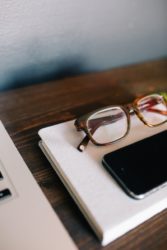
While much of the work we do at Lighthouse Research & Advisory focuses on quantitative research studies, we do a fair amount of qualitative research as well. We’ve collected case studies over time (and continue to) that highlight interesting approaches and examples of innovation within human capital management. The list below offers a wide variety of industries, examples, and flavors for you to learn from.
Want to see another topic or example not listed here? Comment below and and I will see what we can do to find that for you!
Wal-Mart, Automation, and Compassion Training
Walmart’s Fastest Growing Line of Business is Delivering Experiences
The Motley Fool: Blending Talent Management and Engagement
Motley Fool: The Coolest Talent Processes You’ve Never Heard Of
Chipotle: How Internal Mobility Reduced Turnover by 64%
Internal promotion-how Chipotle reduced turnover by 64%
Adtran: Using Hackathons for Employer Branding, Employee Development, and Retention
Using Hackathons for Branding and Retention
Stout Advisory: Performance Management, Peer Feedback, and Employee Engagement
How to Radically Change Your Performance Management Practice [Podcast]
H&R Block: Seasonal Hiring, Strategic Recruiting, and Hiring Manager Communications
Patagonia: measuring the roi of hr programs, hr strategy, employee perks and benefits.
Measuring the ROI of HR Programs is Critical: Here’s How Patagonia Does It
Hot Chicken Takeover: Employee Benefits, Corporate Culture, Leadership, and Social Responsibility
Can a Business Grow Competitively While Doing Social Good? [Podcast]
AlliedUniversal: Talent Acquisition, Employee Referrals, and High-Volume Hiring
How Does AlliedUniversal Hire 90,000 Workers a Year? Referrals and PURPOSE [Podcast]
Duie Pyle: Remote Worker Engagement, Blue Collar Challenges, and Competitive Recruiting
Talent Lessons from the Transportation Industry [Podcast]
Ohio Living: Core Values, Company Culture, and Employee Recognition
We’re Only Human 39: Ohio Living Serves 70,000 Clients Annually with Core Values
Cox Enterprises: HR Analytics, Business Impact, and Strategy
We’re Only Human 53: How to Partner with Your Talent Analytics Team
McDonald’s: Learning Measurement, Business Impact, and ROI
Southwest airlines: corporate culture, employee perks, and employee engagement.
We’re Only Human 40: How Southwest Airlines Lives and Breathes Corporate Culture
HJF: HR Technology Selection and Implementation, HR Leadership, and Modernization
We’re Only Human 55:The HR Leader’s First Year on the Job

HR Training Resources

A Guide to Human Resources Management Case Studies
Human Resource Management case studies provide valuable insights into the challenges faced by HR professionals in diverse workplaces. In this comprehensive guide, we will explore real-life examples of HRM in action, showcasing the strategies and solutions implemented to tackle various HR challenges.
Key Takeaways:
- Human Resources Management Case Studies offer practical insights for HR professionals.
- Real-life examples highlight strategies and solutions for overcoming HR challenges.
- Case studies showcase the importance of effective HR strategies in organizational success.
- Diverse scenarios demonstrate the application of HRM practices in different workplaces.
- Continuous learning and adaptation are crucial for HR professionals to stay effective.
The Changing Landscape of HRM
In the rapidly evolving global business environment, Human Resources Management (HRM) is constantly adapting to new trends and challenges. From the emergence of emerging markets to the digitalization of workplaces, HR professionals have had to navigate through various obstacles to effectively manage their workforce. One of the most significant challenges in recent times has been the global COVID-19 pandemic, which has necessitated swift and innovative HR strategies.
To gain a deeper understanding of how organizations have successfully managed these changes and optimized their HR practices, we will delve into a range of case studies. These case studies provide valuable real-world examples that HR professionals can analyze and apply in their own organizations. By studying these HR case studies , professionals can learn from the experiences of others, gaining insights into successful strategies and approaches.
Utilizing HR case studies for analysis allows us to discover how organizations have leveraged HRM to overcome obstacles and adapt to new circumstances. These real-life examples showcase the diverse ways in which organizations have effectively managed HR challenges, providing valuable lessons and strategies for HR professionals across industries.
Company XYZ, a multinational technology firm, faced challenges in attracting and retaining top talent due to the fast-paced nature of the industry. To address this, they implemented a strategic HR initiative that focused on creating a flexible work environment, providing opportunities for professional development, and offering competitive compensation packages. As a result, the company experienced a significant reduction in employee turnover and an increase in employee satisfaction and productivity.
This case study highlights how HR professionals at Company XYZ were able to adapt to the changing landscape of HRM by implementing innovative strategies. By analyzing such success stories, HR professionals can gain valuable insights into the strategies and practices that drive organizational success.
- HRM is constantly evolving to respond to new trends and challenges in the business world.
- Case studies provide real-world examples of effective HR practices in managing change.
- Successful organizations leverage HRM strategies to optimize their workforce and drive organizational success.
| HR Challenge | Organization | Successful HR Strategy | Outcome |
|---|---|---|---|
| Attracting and retaining top talent | Company XYZ | Creating a flexible work environment, providing professional development opportunities, offering competitive compensation packages | Reduction in employee turnover, increased employee satisfaction and productivity |
The Importance of Effective HR Strategies
Effective HR strategies are crucial for organizations to attract, retain, and develop top talent. By implementing strategic HR practices, companies can create a positive work environment that fosters employee engagement, productivity, and overall organizational success. In this section, we will explore case studies that highlight successful HR strategies implemented by companies across different industries, providing valuable insights for research and inspiration.
Case Studies: Success Stories in HR Management
Case Study 1: Company X
“Our HR strategy of prioritizing employee well-being and work-life balance has had a significant impact on our organizational culture. Through flexible work arrangements, wellness programs, and regular communication channels, we have seen a remarkable increase in employee satisfaction and productivity.”
Case Study 2: Company Y
“By investing in employee development and career progression, we have been able to attract top talent and retain key employees. The implementation of mentorship programs, training initiatives, and performance feedback systems has led to higher employee engagement and a stronger talent pipeline.”
Case Study 3: Company Z
“Our HR strategy focuses on promoting a diverse and inclusive workforce. Through targeted recruitment efforts, diversity training programs, and inclusive policies, we have successfully created a culture that celebrates and values diversity, leading to improved employee satisfaction and innovation.”
The Impact of Strategic HR Practices
These success stories demonstrate the tangible benefits of strategic HR practices. Organizations that prioritize effective HR strategies are better equipped to attract and retain top talent, foster employee engagement and satisfaction, and drive overall organizational success. By studying these case studies, researchers and HR professionals can gain valuable insights and inspiration to enhance their own HR practices and achieve similar levels of success.
By examining these HRM case studies for research and guidance, organizations can adopt successful strategies and adapt them to their unique contexts. The implementation of effective HR strategies is key to creating a thriving workplace culture that empowers employees, maximizes productivity, and ultimately drives the success of the organization.
Fundamental Concepts of HR Management
Before diving into Human Resources Management Case Studies , it is essential to have a solid understanding of the fundamental concepts that underpin HR management. This section will explore key definitions and concepts to provide a strong foundation for in-depth analysis of the case studies.
Definitions and Clarifications
Let’s start by clarifying some key terms:
- Management : Refers to the process of coordinating and overseeing organizational resources to achieve specific goals and objectives.
- Resources : In the context of HR, resources refer to the individuals who contribute to the organization’s success, including employees, contractors, and other stakeholders.
- Role of a Manager : A manager is responsible for planning, organizing, directing, and controlling resources to achieve organizational goals and objectives. In the HR context, managers focus on effectively managing human resources.
- Difference between Management and Administration : While the terms management and administration are sometimes used interchangeably, it is important to note the subtle distinctions. Management is concerned with the implementation of strategies and the coordination of resources, whereas administration involves the overarching policies, procedures, and regulations that govern the organization.
By understanding these fundamental concepts, we can delve deeper into the case studies and gain valuable insights into the challenges and solutions faced by HR professionals.
Inspiring Quote
“Management is doing things right; leadership is doing the right things.” – Peter Drucker
Key Definitions
| Term | Definition |
|---|---|
| Management | The process of coordinating and overseeing organizational resources to achieve specific goals and objectives. |
| Resources | Individuals who contribute to the organization’s success, including employees, contractors, and stakeholders. |
| Role of a Manager | Responsibilities include planning, organizing, directing, and controlling resources to achieve organizational goals. |
| Management vs. Administration | Management focuses on implementing strategies and coordinating resources, while administration involves overarching policies and regulations. |
Management Functions and Responsibilities
Effective management is essential for HR professionals in their role of overseeing an organization’s human capital. Understanding the four basic functions of management – planning, organizing, directing, and controlling – is critical for HRM success. Each function contributes to the efficient and effective management of human resources, ensuring organizational goals are met.
| Management Function | Definition | Application in HRM |
|---|---|---|
| Planning | Setting objectives, developing strategies, and determining the actions required to achieve them. | In HRM, planning involves assessing the organization’s future workforce needs, creating recruitment strategies, and forecasting employee development and training requirements. |
| Organizing | Structuring and coordinating activities, resources, and personnel to achieve the organization’s objectives. | HR managers organize the HR department’s structure, develop job descriptions, and establish reporting relationships to enable efficient HR operations. |
| Directing | Leading and motivating employees to accomplish organizational goals. | HR managers provide guidance, coaching, and feedback to employees, ensuring they understand their roles, responsibilities, and performance expectations. |
| Controlling | Monitoring performance, comparing results against objectives, and taking corrective action when necessary. | HR managers establish performance management systems, conduct performance evaluations, and implement corrective measures to address issues and improve organizational effectiveness. |
In addition to these management functions, HR managers have specific responsibilities that contribute to the overall success of the organization. These responsibilities include:
- Recruitment and selection of qualified candidates
- Employee onboarding, training, and development
- Creating and enforcing HR policies and procedures
- Ensuring legal compliance in all HR practices
- Managing employee relations and resolving conflicts
- Designing and administering compensation and benefits programs
- Developing and implementing employee engagement initiatives
- Overseeing performance management and evaluation processes
Furthermore, HR plays a vital role in the administrative cycle of an organization. HR professionals are responsible for managing and maintaining accurate HR records, handling payroll and benefits administration, and ensuring compliance with employment laws and regulations.
By effectively executing their management functions and fulfilling their responsibilities, HR professionals contribute to the development and success of an organization’s human resources, driving overall organizational performance and productivity.
Skills and Competencies in HR Management
The success of an HR manager relies on a combination of technical skills and personal qualities. Understanding and mastering these essential skills and competencies is crucial for effectively managing human resources in any organization. Here, we will explore the key characteristics that distinguish an effective HR manager and how they contribute to success in HR management.
1. Integrity
Integrity is the foundation of trust in any HR department. HR managers must demonstrate honesty, transparency, and ethical behavior in all aspects of their work. By upholding high ethical standards, HR managers cultivate a culture of integrity, ensuring fair and unbiased treatment of employees and fostering a positive work environment.
2. Flexibility
Flexibility is essential in an ever-changing business landscape. HR managers must adapt to evolving workplace dynamics, industry trends, and technological advancements. This includes being open to new ideas, embracing change, and continuously updating HR strategies to align with organizational goals and employee needs.
3. Resilience
HR managers often face challenging situations that require resilience and the ability to navigate complex issues. They must stay composed in difficult times, effectively manage conflicts, and find creative solutions to address HR challenges. Resilient HR managers are invaluable assets to organizations, as they can lead teams through change and uncertainty, ensuring continuity and stability.
4. Proactivity
Successful HR managers are proactive in identifying potential issues before they escalate. They anticipate future needs and create proactive strategies to address them. By staying ahead of the curve, HR managers can plan and implement initiatives that support employees’ growth, well-being, and overall job satisfaction.
“Proactive HR managers take a proactive approach to identify potential pitfalls early on, allowing organizations to prevent problems rather than just managing them when they arise.”
In addition to these personal qualities, HR managers must possess a range of technical skills to effectively manage human resources. Some of these skills include:
- Recruitment and selection
- Training and development
- Performance management
- Employee relations
- Compensation and benefits
- HR data analysis
To exemplify these skills and competencies, let’s take a look at a real-life HR case study:
| Case Study: Improving Employee Retention | Description |
|---|---|
| Background | An organization was experiencing high employee turnover rates, resulting in increased recruitment costs and a negative impact on productivity and morale. |
| Competencies Used | The HR manager initiated a comprehensive employee retention program that included conducting surveys to identify the underlying causes of turnover, implementing targeted training and development programs, and introducing a reward and recognition system to acknowledge outstanding employee performance. |
| Results | The retention program led to a significant decrease in employee turnover, improved job satisfaction, and increased employee engagement. This, in turn, positively impacted the organization’s overall performance and bottom line. |
By analyzing such HR case studies , aspiring HR professionals and organizations can gain valuable insights into the practical application of skills and competencies in HR management.
Now that we have explored the essential skills and competencies in HR management, it is clear that successful HR managers possess a unique blend of personal qualities and technical skills. These individuals play a vital role in driving organizational success by effectively managing human resources and fostering a positive work environment.
Employee Motivation and Engagement
Motivated and engaged employees are essential for organizational success. In this section, we will explore the crucial role of HR in motivating employees and fostering a culture of engagement. By examining real-life case studies, we will identify effective strategies and initiatives implemented by organizations to boost employee motivation and engagement.
Motivation through Recognition
Employee recognition is a powerful tool for motivating and engaging employees. Organizations that prioritize recognition programs create a culture of appreciation and reinforce desired behaviors. Case studies highlight the impact of tailored recognition programs on employee satisfaction, morale, and performance.
Professional Development and Growth
Providing opportunities for professional development and growth is another key driver of employee motivation and engagement. Organizations that invest in training, mentorship programs, and career advancement opportunities empower employees to enhance their skills and fulfill their potential. Real-life examples demonstrate how these initiatives contribute to higher employee satisfaction and loyalty.
Well-being Initiatives
Employee well-being initiatives play a vital role in nurturing a positive work environment and enhancing motivation. By offering wellness programs, flexible work arrangements, and promoting work-life balance, organizations prioritize the holistic well-being of their employees. Case studies highlight the positive impact of these initiatives on employee engagement, productivity, and overall satisfaction.
Effective Communication
Open and transparent communication is integral to fostering motivation and engagement among employees. Organizations that prioritize effective communication channels, including regular feedback, town hall meetings, and collaborative platforms, create an environment of trust and inclusion. Real-life examples demonstrate how improved communication positively influences employee engagement and overall organizational performance.
“Effective employee motivation and engagement are the cornerstones of a thriving organization. By examining real-life case studies, HR professionals and organizations can gain valuable insights into successful strategies and initiatives that fuel motivation and foster meaningful employee engagement.”
| Case Study | Organization | Key Strategies | Results |
|---|---|---|---|
| 1 | XYZ Company | Implementing a peer recognition program, providing opportunities for skill development through internal training, offering flexible work arrangements | Increased employee satisfaction by 25%, improved retention rates, and enhanced overall productivity |
| 2 | ABC Corporation | Launching a wellness program, promoting work-life balance through flexible scheduling, establishing clear communication channels | Boosted employee engagement by 20%, reduced absenteeism, and improved employee well-being |
| 3 | DEF Organization | Encouraging continuous learning and development, providing career advancement opportunities, fostering a culture of open feedback | Increased employee motivation by 30%, improved talent retention, and enhanced overall organizational performance |
The case studies above demonstrate how organizations have successfully implemented strategies to motivate and engage their employees. By leveraging recognition, professional development, well-being initiatives, and effective communication, these organizations have created a positive work environment that drives employee satisfaction, productivity, and loyalty.
Strategies for Effective HR Management
HR professionals play a critical role in developing and implementing effective HR strategies. By analyzing real-life case studies, we can gain valuable insights into HR best practices. These case studies highlight successful strategies in key areas such as:
Recruitment and Selection
Training and development, performance management, compensation and benefits, labor relations.
Let’s explore how organizations have utilized these strategies to optimize their HR practices and achieve their business objectives.
“The key to effective HR management lies in understanding the unique needs and challenges of your organization. By analyzing case studies, we can gain valuable insights and tailor our strategies to drive employee engagement, productivity, and organizational success.”
Effective recruitment and selection processes are crucial for attracting and hiring top talent. Case studies in this area often showcase innovative methods used to identify and attract qualified candidates. From leveraging technology platforms for applicant screening to implementing targeted recruitment campaigns, organizations have successfully optimized their hiring processes.
Investing in employee training and development is essential for enhancing skills and fostering long-term growth. By examining case studies in this domain, we can learn from organizations that have successfully implemented comprehensive training programs, mentorship initiatives, and continuous learning platforms. These strategies contribute to a skilled and motivated workforce.
Effective performance management systems align individual and team goals with organizational objectives. Case studies in this area often highlight organizations that have implemented performance measurement frameworks, regular feedback systems, and performance-based incentives. This data-driven approach ensures transparency, fairness, and continuous improvement.
Strategic compensation and benefits programs attract, retain, and motivate talented employees. Case studies demonstrate how organizations have designed competitive salary structures, employee recognition programs, and comprehensive benefits packages. These initiatives contribute to higher employee satisfaction, engagement, and overall organizational performance.
Managing labor relations requires effective communication, negotiation, and conflict resolution skills. Case studies in this area offer insights into organizations that have successfully fostered positive relationships with unions, implemented fair labor practices, and resolved labor disputes amicably. These examples highlight the importance of proactive labor management strategies.
By learning from these case studies and applying the demonstrated strategies, HR professionals can optimize their HR management practices and create a positive impact on organizational success.
| HR Management Strategy | Case Study Example |
|---|---|
| Recruitment and Selection | XYZ Company’s Innovative Hiring Practices |
| Training and Development | ABC Corporation’s Comprehensive Employee Training Program |
| Performance Management | DEF Inc.’s Data-Driven Performance Evaluation System |
| Compensation and Benefits | 123 Organization’s Employee Recognition and Rewards Program |
| Labor Relations | MNO Corporation’s Successful Union Negotiation Process |
These case studies showcase the application of effective HR management strategies in different organizations. They provide practical examples of how organizations have achieved success by implementing various strategies tailored to their unique needs and challenges.
Leveraging HR Technology
HR technology has revolutionized HRM processes, enabling organizations to streamline operations and enhance efficiency. By leveraging the power of technology, HR professionals can optimize their strategic decision-making and ensure a seamless employee experience.
Let’s examine some insightful case studies that illustrate the successful implementation and utilization of HR technology. These examples demonstrate how organizations have harnessed the potential of HRIS (Human Resource Information System), talent management software, and data analytics tools to drive meaningful outcomes and achieve their HR objectives.
Case Study 1: Enhancing Recruitment with HRIS
In this case study, Company ABC implemented an HRIS software to streamline their recruitment process. The software automated job posting, applicant tracking, and resume screening, significantly reducing the time and effort spent on manual tasks. With the implementation of HRIS, the HR team at Company ABC experienced a 40% reduction in time-to-hire and an improvement in the quality of hires.
“The HRIS software has transformed our recruitment process, allowing us to focus on strategic talent acquisition. The automation and advanced analytics capabilities have enabled us to make data-driven decisions and hire top talent efficiently.” – Sarah Thompson, HR Manager, Company ABC
Case Study 2: Optimizing Performance Management with Talent Management Software
In this case study, Company XYZ adopted a talent management software platform to streamline their performance management process. The software offered features such as goal setting, continuous feedback, and performance analysis, empowering managers and employees to take a more proactive approach to performance improvement. As a result, Company XYZ experienced a significant increase in employee engagement and aligned performance goals across the organization.
“The talent management software has revolutionized our performance management process. It has fostered a culture of continuous feedback and empowered our employees to take ownership of their professional growth. The transparent performance analytics have enabled us to identify and reward top performers effectively.” – John Davis, HR Director, Company XYZ
Case Study 3: Leveraging Data Analytics for Strategic Decision-Making
In this case study, Company DEF implemented advanced data analytics tools to gain insights into their HR processes. By analyzing data related to employee engagement, turnover rates, and performance metrics, the HR team at Company DEF could identify trends, patterns, and areas for improvement. This strategic use of data analytics enabled Company DEF to make informed decisions and implement targeted HR interventions, resulting in improved retention rates and increased productivity.
“Data analytics has been a game-changer for our HR department. By leveraging actionable insights from our HR data, we have been able to proactively address employee concerns, enhance our talent acquisition strategies, and design targeted training programs. Our data-driven approach has significantly contributed to our overall organizational success.” – Lisa Johnson, HR Manager, Company DEF
These case studies demonstrate how organizations can harness the potential of HR technology to drive efficiency, improve decision-making, and enhance the employee experience. By leveraging the right combination of HRIS, talent management software, and data analytics tools, HR professionals can transform their HR practices and contribute to the strategic objectives of the organization.
Leveraging HR technology is essential in today’s digital era, where technology continues to shape the future of work. By staying informed about the latest HR technology trends and exploring case studies, HR professionals can identify opportunities for innovation and drive impactful HR initiatives.
Now, let’s explore another critical aspect of HR management – diversity and inclusion.
Diversity and Inclusion in HR Management
In today’s diverse workforce, creating an inclusive environment is essential for effective human resources management. Organizations that prioritize diversity and inclusion benefit from improved employee satisfaction, increased productivity, and enhanced innovation. Let’s explore some real-life examples of HRM case studies that highlight the successful efforts of organizations to foster diversity and inclusion within their workforce.
Case Study 1: XYZ Company
XYZ Company, a global technology firm, recognized the value of diversity and inclusion in driving organizational success. They implemented a comprehensive diversity program that focused on recruiting and retaining employees from diverse backgrounds. By promoting a culture of inclusion through training, mentorship, and employee resource groups, XYZ Company witnessed a significant increase in employee engagement and creativity. This case study demonstrates the positive impact of diversity and inclusion initiatives on overall organizational performance.
Case Study 2: ABC Corporation
ABC Corporation, a leading retail company, recognized the importance of diversity and inclusion in meeting the needs of their diverse customer base. They implemented unconscious bias training for their hiring managers and implemented policies to ensure equal opportunities for all employees. As a result, ABC Corporation experienced improved employee satisfaction, reduced turnover rates, and a boost in customer loyalty. This case study exemplifies the positive outcomes that can be achieved through a commitment to diversity and inclusion in HR management.
By analyzing these HRM case studies , organizations can gain valuable insights into successful diversity and inclusion initiatives. Implementing similar strategies, such as targeted recruitment efforts, inclusive policies, and diversity training programs, can help companies create a more inclusive and diverse workforce, fostering a culture of innovation and success.
Incorporating diversity and inclusion into HR management practices is not only a legal and moral imperative, but it also leads to tangible business benefits. Organizations that embrace diversity and create an inclusive workplace are better equipped to attract top talent, retain employees, and drive innovation. By learning from these HRM case studies , organizations can develop effective strategies to foster diversity and inclusion, ultimately contributing to their long-term success.
Adapting HR Practices in Times of Crisis
In times of crisis, such as economic downturns or natural disasters, HR professionals face unique challenges that require them to adapt their practices quickly and effectively. By analyzing HRM case studies that showcase organizations’ responses to crises, we can gain valuable insights into the strategies and approaches they employed to navigate through turbulent times and emerge stronger.
The Importance of Flexibility
One key lesson we can learn from HR case studies in times of crisis is the importance of flexibility. Organizations need to be agile and responsive to rapidly changing circumstances. HR professionals play a vital role in proactively adjusting HR practices, policies, and procedures to meet the immediate needs of employees and the organization as a whole.
“During the global financial crisis of 2008, XYZ Corporation faced severe economic challenges that threatened its survival. The HR team swiftly implemented cost-cutting measures, including a freeze on hiring and salary reductions, while carefully balancing employee morale and engagement. Through open communication and transparent decision-making, XYZ Corporation managed to weather the storm and emerge with a more resilient workforce.”
By adopting a flexible approach, HR professionals can help organizations navigate through turbulent times, mitigate the impact on employees, and position the company for recovery and future growth.
The Power of Resilience
Resilience is another critical factor in adapting HR practices during a crisis. HR professionals need to demonstrate resilience in the face of uncertainty and guide employees through challenging times. By instilling confidence, providing support systems, and fostering a sense of unity, HR managers can help organizations withstand the pressures of a crisis and emerge stronger.
Resilience can be seen in action through the implementation of employee assistance programs, mental health initiatives, and crisis communication plans. These measures help employees navigate the emotional and psychological challenges brought on by the crisis, ensuring their well-being and enabling them to contribute effectively to the organization’s recovery efforts.
Proactive Planning for Future Crises
The best HR case studies in times of crisis highlight the importance of proactive planning. While crises may be unexpected, organizations can anticipate potential challenges and develop contingency plans to address them swiftly and efficiently. By anticipating various scenarios and regularly reviewing and updating crisis response strategies, HR professionals can position their organizations for success even in the face of uncertainty.
In addition to crisis preparedness, proactive planning involves identifying key skills and competencies that will be crucial in future crises. By integrating training programs, succession planning, and talent management initiatives into their HR practices, organizations can ensure they have the capabilities necessary to navigate through any crisis that may arise.
Table: Strategies for Adapting HR Practices in Times of Crisis
| Strategy | Description |
|---|---|
| Flexible workforce | Implementing measures like remote work, flexible scheduling, and job sharing to accommodate changing needs and maintain business continuity. |
| Transparent communication | Establishing open and honest communication channels to keep employees informed about the organization’s response, plans, and any changes that may affect them. |
| Employee support | Providing resources, such as mental health programs, financial assistance, and wellness initiatives, to support employees’ well-being during challenging times. |
| Adaptive learning and development | Investing in employee training and development programs that equip them with the skills and knowledge needed to adapt to new challenges and evolving roles. |
Adapting HR practices in times of crisis requires a combination of flexibility, resilience, and proactive planning to ensure the well-being of employees, maintain productivity, and secure the organization’s long-term success.
Human Resources Management Case Studies provide HR professionals with valuable insights into real-world challenges and innovative solutions. By analyzing these examples, organizations can learn from best practices and optimize their own HR strategies. The showcased case studies highlight the diverse scenarios that HR professionals face and the creative approaches they employ to overcome obstacles.
Continuous learning from these experiences enables HR professionals to enhance their skills and contribute to the overall success of their organizations. These case studies serve as a source of inspiration, demonstrating the importance of adaptability, strategic thinking, and effective HR management.
By embracing the lessons learned from Human Resources Management Case Studies, HR professionals can strengthen their expertise, foster employee engagement, and drive organizational growth. These real-life examples reaffirm the significance of HRM for businesses in today’s dynamic and ever-evolving corporate landscape.
Source Links
- https://www.shrm.org/credentials/certification/educators/teaching-resources
- https://www.e-elgar.com/shop/usd/case-studies-in-work-employment-and-human-resource-management-9781788975582.html
- https://gfoundry.com/everything-you-need-to-know-about-human-resources-a-manual-for-managers-and-professionals/
Similar Posts

A Guide to HR Benefits Strategy
A well-designed employee benefits plan is crucial for acquiring and retaining talent, as it holds more power than high compensation. This article provides a guide to creating an effective HR benefits strategy that will enhance employee wellness and optimize HR solutions. Key Takeaways: An effective HR benefits strategy is essential for attracting and retaining talent….

A Guide to Human Resources Management Solutions
Welcome to our comprehensive guide on Human Resources Management Solutions. In today’s fast-paced business landscape, effective HR management is more important than ever. HR departments need the right tools, software, and systems to streamline their processes, enhance employee management, and drive organizational success. In this guide, we will explore different aspects of Human Resources Management…

Long-Term Disability in the Workplace: Policies and Employee Support
Kickstart your understanding of how to support employees with long-term disabilities in the workplace with essential strategies and programs.

A Guide to HR Workforce Analytics
HR workforce analytics, also known as analytics in HR or HR data analysis, is a powerful tool that can provide valuable insights and drive strategic decision-making in human resources. By collecting and interpreting workforce data, organizations can gain workforce data insights that support evidence-based decision-making and lead to better business outcomes. There are different types…

The Impact of Employee Rights on Workplace Dynamics
Open the door to understanding how employee rights influence workplace dynamics, shaping organizational culture and interactions.
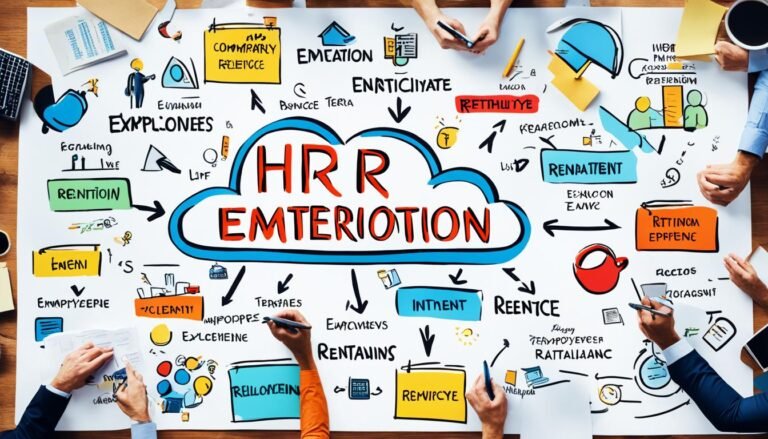
A Guide to HR Employee Retention Programs
Managing for employee retention is crucial for organizations to attract and retain key employees, reduce turnover, and improve overall business performance. In this comprehensive guide, we will explore HR employee retention programs and provide you with key strategies and best practices to improve employee retention and enhance employee loyalty. Employee retention programs are designed to…
This site uses cookies to improve your experience. By viewing our content, you are accepting the use of cookies. To help us insure we adhere to various privacy regulations, please select your country/region of residence. If you do not select a country we will assume you are from the United States. View our privacy policy and terms of use.
- Employee Benefits
- Change Management
- Talent Acquisition
- Applicant Tracking Systems

7 Steps to Building a Successful Talent Acquisition Team (+Netflix Case Study)
Analytics in HR
AUGUST 8, 2023
Talent acquisition team structure Examples of organizations’ talent acquisition team structures 7 Steps for building a talent acquisition team How to measure the success of a talent acquisition team Case study : Netflix’s talent acquisition team What is a talent acquisition team?
Case Study: Call Center
NOVEMBER 17, 2020
Our case study had invested in a software-based, onsite WFM system five years before switching to Workforce Management Suite. The post Case Study : Call Center appeared first on SwipeClock HRMS Software. Keep labor costs in check while still providing a high level of service. How much can you save? ArticleID 7524.
This site is protected by reCAPTCHA and the Google Privacy Policy and Terms of Service apply.
- Beyond the Check-in: Building Trust and Performance Through Powerful 1:1s
- Cultivating Engagement: Strategies and Actionable Plans for Success
- Mastering Remote Onboarding: Proven Strategies for Seamless New Hire Integration
MORE WEBINARS
Trending Sources
- HR Bartender
- Engage2Excel
- DecisionWise

15 HR Analytics Case Studies with Business Impact
NOVEMBER 5, 2018
For this article, I have collected 15 of the best HR analytics case studies I’ve come across in the past two years. Each of these case studies are connected with a concrete business impact. For each case study , I will refer to their original publication. 15 HR Analytics Case Studies .

Children’s Mercy Hospital Case Study
Stories Incorporated HR
APRIL 8, 2020
Want this case study as a PDF? The post Children’s Mercy Hospital Case Study appeared first on Stories Incorporated. Reading Time: 6 minutes. Find it here ! For more than 120 years, Children’s Mercy Hospital (CM) in Kansas City, Missouri has been creating a world of well-being for children and their families.
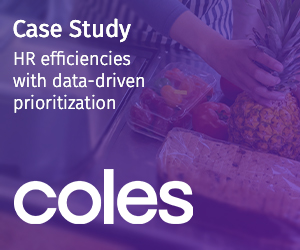
HR Efficiencies with Data-Driven Prioritization (Case Study)
Advertiser: Traitify
As one of Australia’s largest and most iconic retailers, Coles Group employs 115,000+ team members in its network of 2,400+ locations across the country. With hiring at such a high volume, Coles needed a fast and efficient way to properly screen and prioritize the right candidates, while still complying with government standards of hiring.

New i4cp Case Study Explores Humana’s Innovations in Virtual Volunteerism (i4cp login required)
DECEMBER 15, 2020
In a new i4cp case study , Innovating Community and Social Well-Being During the Pandemic: Virtual Volunteerism and Tech-Enabled Employee Safety at Humana , director of associate well-being Elona DeGooyer shared some of the changes Humana has made to shift volunteer activities to virtual and hybrid options. Not an i4cp member yet?

Case Study: Strategic Workforce Planning for Rail Infrastructure Managers
MARCH 30, 2020
In this case study , strategic workforce planning is applied to solve this national problem, impacting millions of commuters. The post Case Study : Strategic Workforce Planning for Rail Infrastructure Managers appeared first on AIHR Analytics. This requires tremendous changes in the current workforce. Curious how?

Case Study: Diverseco
EmployeeConnect
SEPTEMBER 13, 2022
The post Case Study : Diverseco appeared first on EmployeeConnect HRIS. EmployeeConnect continually reaches out to us for product feedback and input when modernising further products. They are communicative, responsive and solution focussed. – Elizabeth Panayi. Elizabeth Panayi, Deputy Chief Executive Officer in Diverseco.

Breaking Gender Barriers in Mining: South Flank Case Study
AUGUST 24, 2023
Harvard Business Review’s South Flank case study reveals remarkable success in a male dominated industry. Barriers to achieving gender equality highlighted in the South Flank case study include: “Backlash” from men who believe they are at a personal disadvantage by attempts to overturn the disadvantages faced by women.

Improving Access To & Utilization Of Cancer Screening With Color
Advertisement
Through an in-depth case study , Color's unique approach to comprehensive cancer care has shown significant benefits in increasing screening rates and enhancing patient knowledge. Discover how Color's comprehensive care solution is revolutionizing cancer screening adherence and knowledge.

Building Belonging Through a DEI Wall: A Case Study of EDSI's Success
JUNE 5, 2024
Discover how EDSI’s PA CareerLink® Montgomery County branch is championing diversity, equity, and inclusion through the innovative DEI-Wall. Learn about our commitment to fostering a sense of belonging and promoting self-driven DEI education.

PayParity Pay Equity Case Study: Mother Jones
SEPTEMBER 6, 2022
This case study was originally published in our partner ADP’s Spark blog. The post PayParity Pay Equity Case Study : Mother Jones first appeared on Trusaic. . “The entire process has been transparent, which is a critical part of our culture,” she says. Now is the time to lead the way in fair pay.

Topco?| Case Study?
NOVEMBER 1, 2021
Resource Download: Topco Case Study ? . Case Study ?. Resources , Case Studies Resource Download:Topco Case Study ? Case Study ? Return to resources. Free up HR with PlanSource. ? . Download PDF?. You Might Also Like. Free up HR with PlanSource.? Thursday, November 11 | 1 p.m.
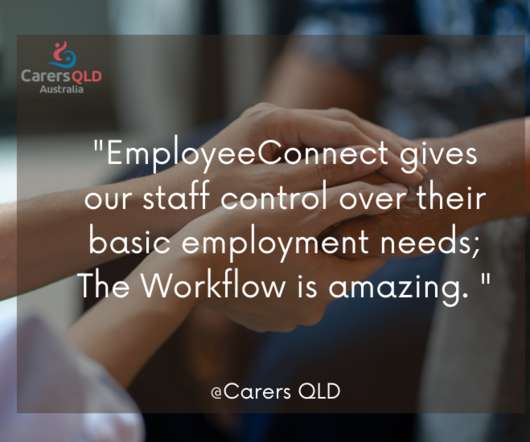
Case Study: Carers Queensland
MARCH 15, 2022
The post Case Study : Carers Queensland appeared first on EmployeeConnect HRIS. The organisation can see the steps and follow the process for setting up the system requirements with the help of EmployeeConnect consultants, no matter what module it is. We have very close relationships, and we value this relationship very, very highly.

Corporate Tell-All: International Expansion Horror Stories
Advertiser: G-P
Download the case study to discover: Real-life international growth challenges and the strategies that effectively solved them. From employee misconduct in South Korea to employee immigration setbacks in Australia, our HR specialists have successfully vanquished numerous harrowing tales that come with growing international teams.

Case study: McKonly & Asbury Leverages AssessTEAM for Comprehensive 360-Degree Reviews
AssessTEAM Performance Management
JUNE 25, 2024
The post Case study : McKonly & Asbury Leverages AssessTEAM for Comprehensive 360-Degree Reviews appeared first on AssessTEAM. By facilitating anonymous, multi-source feedback, the firm was able to gain a well-rounded understanding of employee performance and drive meaningful improvements across the organization.

Franklin Templeton Case Study
MAY 7, 2024
The post Franklin Templeton Case Study appeared first on Decusoft.

Defining Innovation – A Case Study
OCTOBER 17, 2023
Watch the case study video here: Free Demo Kelly Neaves Sign up to our Newsletter Discover More Keep up to date with a collection of articles, resources and insights for people hiring, managing and developing your people.
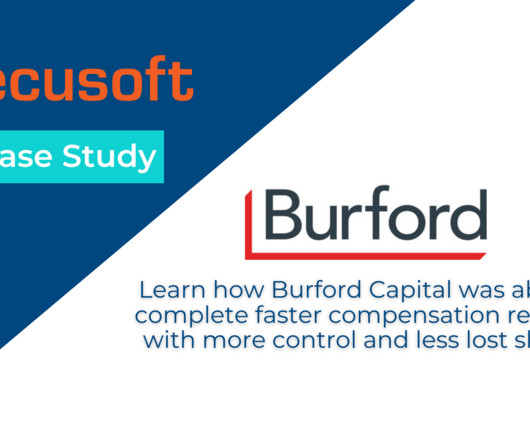
Burford Capital Case Study
SEPTEMBER 7, 2023
Download the Case Study Now! The post Burford Capital Case Study appeared first on Decusoft. Hoeffner joined Burford Capital in September 2021 as Vice President of Human Resources. We spoke to her about her choice to adopt Decusoft Compose for compensation planning and management.

5 Reasons Leaders Invest in Language Training
Advertiser: Rosetta Stone
In this new case study from Rosetta Stone®, thousands of learners were surveyed about the business impact of learning a new language. It can create international trade, build partnerships, and grow company revenue, but language barriers often stand in the way of such progress.

Case study: Leading Accounting Firm Leverages AssessTEAM for Comprehensive 360-Degree Reviews
The post Case study : Leading Accounting Firm Leverages AssessTEAM for Comprehensive 360-Degree Reviews appeared first on AssessTEAM. By facilitating anonymous, multi-source feedback, they were able to gain a well-rounded understanding of employee performance and drive meaningful improvements across the organization.

City of Kalamazoo | Case Study
AUGUST 19, 2021
Resource Download: City of Kalamazoo Case Study . City of Kalamazoo | Case Study . Case Studies Resource Download:City of Kalamazoo Case StudyImplementing your very first benefits administration software can seem like a daunting task. Return to resources. Download PDF. You Might Also Like.

Resource Download: City of Kalamazoo Case Study . Clearway Energy Group | Case Study . Case Studies Learn how the PlanSource benefits platform revolutionized Clearway Energy’s OE. The post City of Kalamazoo | Case Study first appeared on PlanSource. Return to resources.

Clearway Energy Group | Case Study
AUGUST 20, 2021
Resource Download: Clearway Energy Group Case Study . Clearway Energy Group | Case Study . Case Studies Learn how the PlanSource benefits platform revolutionized Clearway Energy’s OE. The post Clearway Energy Group | Case Study first appeared on PlanSource. Return to resources. Download PDF.

Killing the Annual Performance Review, and What To Do After the Funeral
Speaker: Jo Weech, CEO & Primary Consultant, Exemplary Consultants
In this webinar, we are going to review all of the reasons for completely eliminating this archaic practice, what to do in its stead, and look at some case studies of the successful leveraging of new practices that are embraced by both line managers and team members alike.
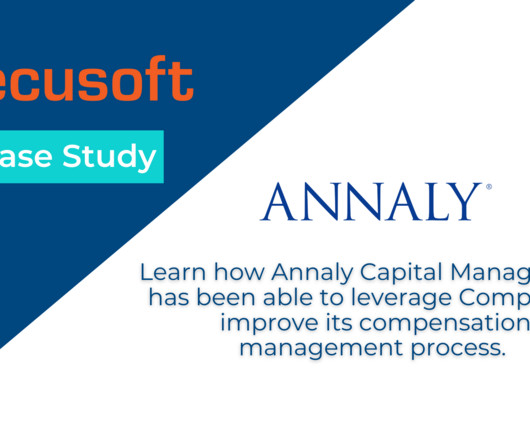
Annaly Capital Management Case Study
JULY 11, 2023
Download the Case Study Now! The post Annaly Capital Management Case Study appeared first on Decusoft. We spoke to Morgan Littman, who specializes in compensation in Annaly’s Human Capital group, about the firm’s experience with Compose.

Dell Technologies Case Study
DECEMBER 4, 2020
In our Dell Technologies case study , we share Stories Inc.’s Get the full case study . See the content we created for Dell Technologies and learn about the detailed, global program in the Dell Technologies case study ebook. The post Dell Technologies Case Study appeared first on Stories Incorporated.
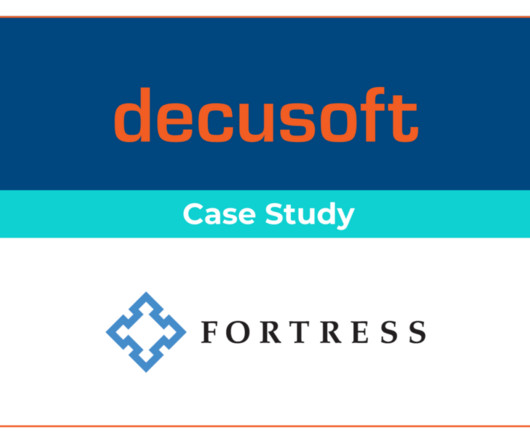
Fortress Investment Group Case Study
SEPTEMBER 21, 2023
Download the Case Study Now! Over that time, Fortress has worked with Decusoft to help expand the platform’s capabilities to serve the needs of complex financial firms. We spoke to Jennifer Apilado, Director of Compensation at Fortress, who oversees the firm’s compensation process and has partnered with Decusoft since 2011.
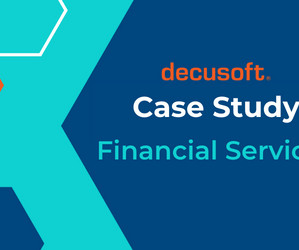
Financial Services Case Study
MARCH 1, 2023
READ THE CASE STUDY >> The post Financial Services Case Study appeared first on Decusoft. As an asset management company, their compensation plans were sophisticated and required more flexibility than their HCM could provide.

Understanding the Fundamentals of DEI Accountability in HR
Speaker: Jackie Ferguson, CDE® - Co-Founder The Diversity Movement | Bob Osmond — CDE® and President, Racepoint Global
Case studies /research on what accountability looks like. In this webinar, you will learn: What are the challenges that businesses face with DEI accountability, and how can they overcome them? Building an accountability system. Actionable insights on holding accountability. July 26, 2022 at 9:30 am PDT, 12:30 pm EDT, 5:30 pm GMT

AUGUST 15, 2023
This effort was the intent of the company covered in this case study , a customer service center that had launched eight years previously with one healthcare client. The benefits for our case study company were two-fold: a savings in labor costs and improved retention.

Big Lots Builds Workforce Engagement & Innovation in New Josh Bersin Case Study
SocialChorus
JUNE 6, 2024
The results were game-changing: 9,000 more associates reached than before 51% increase in post engagement year-over-year $10M+ saved/reinvested from employee ideas Download the full case study to learn Big Lots’ multidirectional communication strategies, including: Segmenting topics for relevant content Guidelines balancing governance and (..)

Case Study: Financial Services Firm
FEBRUARY 23, 2023
READ THE CASE STUDY >> The post Case Study : Financial Services Firm appeared first on Decusoft. After using spreadsheets for over a decade, they were convinced that the process was entirely too manual and inefficient.
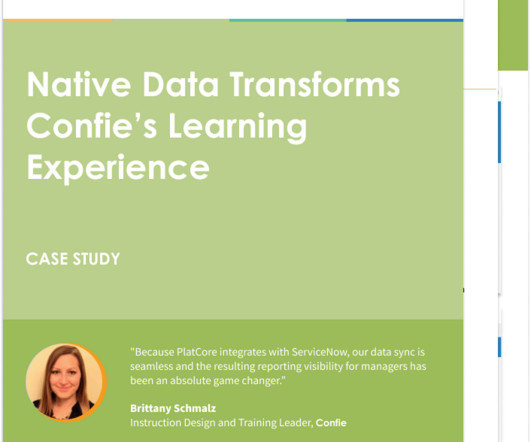
Case Study: Confie’s Native LMS
PlatCore LMS
AUGUST 22, 2023
Read the Full Case Study : Download & Share: The post Case Study : Confie’s Native LMS appeared first on PlatCore. Learn how PlatCore has been a ‘game-changer’ for Confie’s learning and development team, enabling scalable growth and enhancing innovative training efforts.

Make Your Onboarding Inclusive & Engaging
Speaker: Daria Friedman, Principal Analyst, Talent Acquisition and Engagement practices at Brandon Hall Group
The webinar will also include case studies featuring onboarding success stories through technology and innovative programs. This webinar will address how to improve your organization’s onboarding so that it will engage all employees, regardless of their work situations.
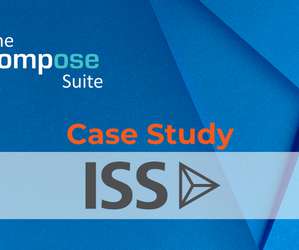
Case Study: Institutional Shareholder Services
JANUARY 25, 2023
READ THE CASE STUDY >> The post Case Study : Institutional Shareholder Services appeared first on Decusoft. They had three clear priorities, ease of use for managers, flexibility in design and process, and working with a great team that could help them with their short, but intense year-end cycle.

Case Study: NJ Transit Bus Operations Training Department
MARCH 4, 2020
The case study below explains the needs and outcomes of a train-the-trainer project EDSI was hired to provide for New Jersey Transit, the state of New Jersey’s public transportation corporation. Although each training program is unique, we often assist companies in the development of ‘train-the-trainer’ programs.

A Case Study in Hiring with Intentionality, Not by Accident
JANUARY 12, 2024
“So it’s really designed to be a two-way street and to create that conversation from the very, very beginning points. So we’re setting the expectations for what employment is going to be like, especially as a leader at our company.”

BalanceBenefits Case Study
JUNE 15, 2020
The post BalanceBenefits Case Study appeared first on eni.

Healthcare Case Study
The post Healthcare Case Study appeared first on eni.

Hybrid, In-Person, Or Fully Remote? Case Studies On The Optimal Work Arrangement
AUGUST 21, 2023
Case Studies On The Optimal Work Arrangement appeared first on Wellable. Research reveals the stark truths of remote work's productivity shortcomings, paving the way for a more balanced solution: the rise of hybrid work models. The post Hybrid, In-Person, Or Fully Remote?

Case Study: Home Health Agency
FEBRUARY 6, 2023
Home Health Agency Case Study Home healthcare agencies have considerable growth opportunities in today’s market. This case study explains how WorkforceHub helped a 30-employee for-profit home health agency improve their labor processes. The post Case Study : Home Health Agency appeared first on Swipeclock.

Case Study: MarketGap’s Innovative Strategy for Agile Workforce Evolution
JUNE 30, 2023
Case Study : Rapid Transformation When MarketGap realized the need for digital transformation and a more dynamic online presence, they turned to freelancers for their expertise in innovation and experimentation. The post Case Study : MarketGap’s Innovative Strategy for Agile Workforce Evolution appeared first on Hppy.

Case Study: Donaldson
DECEMBER 24, 2020
Download the full case study here. Onboarding allows new hires to complete tax forms and acknowledge handbooks and policy information before their first day, eliminating tedious work for administrators at Donaldson. Want More Information?
Stay Connected
Join 398,000+ Insiders by signing up for our newsletter
- Participate in Human Resources Today
- 2019 Human Resources Today Summer Reading List
- Stay At Home Reading List
- Add a Source
- Add a Resource
- See All
- 2018 Human Resources Today MVP Awards
- 2017 Human Resources Today MVP Awards
- 2019 Human Resources Today MVP Awards
- 2020 Human Resources Today MVP Awards
- 2021 Human Resources Today MVP Awards
- 2022 Human Resources Today MVP Awards
- Fri. Jun 28
- Thu. Jun 27
- Wed. Jun 26
- Tue. Jun 25
- Jun 15 - Jun 21
- Employee Engagement
- Onboarding Software
- Talent Management
- Performance Management
- Time and Attendance
- More Topics

Input your email to sign up, or if you already have an account, log in here!
Enter your email address to reset your password. a temporary password will be e‑mailed to you., be in the know on.
Human Resources Today
Expert insights. Personalized for you.
We organize all of the trending information in your field so you don't have to. Join 398,000+ users and stay up to date on the latest articles your peers are reading.

Get the good stuff
Subscribe to the following Human Resources Today newsletters:
You must accept the Privacy Policy and Terms & Conditions to proceed.

You know about us, now we want to get to know you!
Check your mail, we've sent an email to . please verify that you have received the email..
We have resent the email to
Let's personalize your content
Use social media to find articles.
We can use your profile and the content you share to understand your interests and provide content that is just for you.
Turn this off at any time. Your social media activity always remains private.
Let's get even more personalized
Choose topics that interest you., so, what do you do.
Are you sure you want to cancel your subscriptions?
Cancel my subscriptions
Don't cancel my subscriptions
Changing Country?
Accept terms & conditions.
It looks like you are changing your country/region of residence. In order to receive our emails, you must expressly agree. You can unsubscribe at any time by clicking the unsubscribe link at the bottom of our emails.
You appear to have previously removed your acceptance of the Terms & Conditions.

We noticed that you changed your country/region of residence; congratulations! In order to make this change, you must accept the Aggregage Terms and Conditions and Privacy Policy. Once you've accepted, then you will be able to choose which emails to receive from each site .
You must choose one option
Please choose which emails to receive from each site .
- Update All Sites
- Update Each Site
Please verify your previous choices for all sites
Sites have been updated - click Submit All Changes below to save your changes.
We recognize your account from another site in our network , please click 'Send Email' below to continue with verifying your account and setting a password.
You must accept the Privacy Policy and Terms & Conditions to proceed.
This is not me

Nurturing Nikkei’s future talent
- Call for Change
- When Tech Meets Human Ingenuity
- A Valuable Difference
- Related Capabilities
Call for change
Transforming the newspaper business for tomorrow
After 145 years in the newspaper business, Nikkei Inc. is being impacted by intense competition, new media formats, and a generation of young people losing interest in newspapers. As a result, the company is revamping its products and business operations, while also changing Nikkei’s very structure and employee mindset. To support that new strategy, Nikkei created a company-wide Digital Transformation Committee made up of corporate, HR, and IT teams. The committee decided to focus on HR first, and introduce an advanced personnel system so managers can use data analytics to make talent decisions. Nikkei chose to implement new IT infrastructure to underpin that transformation.
"This is a watershed moment for Nikkei's continued growth. The reform of HR management, including the job-based personnel system, is a concrete step in the right direction." — Mr. Makoto Shudo , Assistant General Manager, HR/General Affairs – Nikkei Inc.
When tech meets human ingenuity
Driving HR with data
Nikkei’s HR department aimed to redefine the organization's mission, review manager positions, simplify the chain of command, and reform HR management. Central to this evolution was the introduction of an advanced HR system, initially for managers.
The solution would need to seamlessly integrate Nikkei’s various systems in order to efficiently collect and analyze HR data to improve management decision-making. Workday Human Capital Management (HCM) was chosen for the job, and Nikkei selected Accenture as its implementation partner because of our expertise in HR consulting, organizational management, and Workday implementations. Accenture’s team had already worked on Workday HCM implementations in Japan and could advise on local labor laws and the best ways to use the solution at Nikkei.

A valuable difference
Promoting company-wide penetration
Workday HCM, along with the HR component for managers, was implemented in April 2021 and Nikkei is already seeing the benefits.
HR now uses training data to match workers with the best programs to boost their skills or gain relevant new ones. The HCM software provides a forum for workers to share tips related to internal training—data that Nikkei will use to inform new offerings. Topics users have clicked on most frequently will be used to provide personalized recommendations.
Nikkei and Accenture plan to expand the solution’s functionality further, extending adoption to all employees and integrating skills and project data. Nikkei is now ready to develop a new generation of talent.
Related capabilities
Intelligent platform services, talent & organization.
People Analytics: 5 Real Case Studies
Maaike Ankum
Harness the power of HR analytics to improve business performance by learning from these organizations.

Data is essential to an organization’s growth and profitability. HR analytics turns the focus inwards on one of the biggest determining factors of a company’s success: their employees. Collect and analyze data about the talent within your organization and get the insights you need to increase productivity, reduce waste, and capitalize on unique opportunities.
As a leading expert in employee feedback solutions, Effectory encourages a data-driven approach to identifying opportunities for improvement within organizations. This includes refining strategies to hire the right talent, designing individual employee development plans, and enhancing employee engagement. We’re always available to talk with you about how we can make people analytics work for your organization.
This article will, first, outline the steps to implementing an effective people analytics strategy and, second, explore case studies from five prominent organizations that highlight the different ways in which HR analytics can be used to improve your business outcomes.
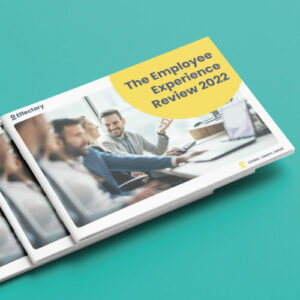
Download the Employee Experience Review
Discover how employees around the world are experiencing different parts of the employee journey and how this affects the employee experience.
The steps in an HR analytics strategy
Organizations need to have clearly defined processes to gather data, analyze it, identify patterns, and turn those insights into actionable initiatives. Though the terms are similar, HR reporting and HR analytics are not, in fact, interchangeable. They are actually the first and final steps, respectively, in the three-part process of people analytics.
1. Reporting
HR reporting is the foundation of people analytics, bringing together all the data your organization has tracked.
HR reports are objective and factual. They present data in a digestible way to highlight patterns, but do not derive conclusions.
2. Analysis
HR analysis is the investigative phase where your team draws connections among data points and develops hypotheses.
During analysis, you may need to identify gaps in available data and fill them in using new tools and initiatives like surveys, employee interviews, or game-like personality tests.
3. Analytics
This is where the people-data, HR reports, and analysis come together to give you a definitive picture of the problem or opportunity your organization is facing. Data and hypotheses are structured through analytics to provide actionable insights.
What is predictive people analytics?
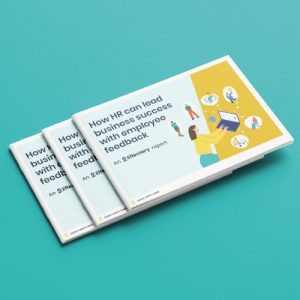
How HR can lead business success
HR and employee listening are crucial to business success. Here is how employee insights can help your organization.
The following step-by-step guide is another way to map out the people analytics process:
- Identify opportunities or areas for improvement
- Establish performance metrics
- Collect data
- Identify relevant patterns and develop hypotheses
- Fill the data gaps
- Analyze the results
- Implement data-driven strategies
Here are five real-world case studies that demonstrate different ways in which businesses have used people analytics to improve their bottom line.
Johnson & Johnson: Experience and retention
Area for improvement: American multinational Johnson & Johnson was looking to improve both employee performance and retention. At the time, their recruiters prioritized candidates with job experience in the industry, assuming they were more likely to stay with the company and would be quicker to make significant contributions. As a result, the company experienced a 10 percent decrease in new hires who had recently graduated from college.
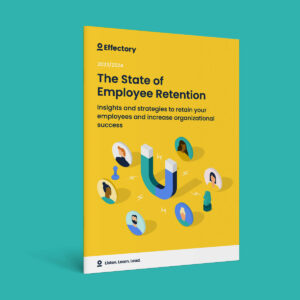
The State of Employee Retention
Uncover why employees leave, hidden costs to organizations, and proven retention strategies in our insightful report.
Data and analysis: Challenging these assumption, HR and the people analytics team at Johnson & Johnson compiled data on 47,000 employees to test the link between experience and turnover. The data revealed that employees hired right out of college actually remained with the organization “significantly longer” than more experienced candidates. Furthermore, there was no significant difference between the two groups’ contributions to the company. Their new hypothesis is that Johnson & Johnson’s two-year leadership development program may help reduce turnover among recent graduates. Analytics and outcome: Based on the people analytics, Johnson & Johnson increased hires of new graduates by 20 percent, effectively reducing turnover while maintaining performance.

Clarks: Employee engagement
Area for improvement: C. & J. Clark is a British shoe manufacturer and retailer with approximately 1400 locations and over 13,000 employees. According to Chief People Officer, Belinda Deery, Clarks already had high levels of employee engagement relative to their industry but were looking to maximize return on investment, especially at the store level. Data and analysis: The HR analytics team used 450 data points to get an accurate picture of the relationship between employee engagement and overall business performance. The report and subsequent analysis revealed that for every 1 percent increase in employee engagement, business performance increased by 0.4 percent, confirming the correlation and the value of employee engagement. The analytics team also collected additional data from the company’s 100 best-performing stores.
Analytics and outcome: The combined findings of this two-step people analytics initiative enabled Clarks to implement multiple effective changes and programs that improved engagement and increased business performance. First, they drafted a replicable schema to create high-performing stores, including the ideal team size for optimum efficiency. The company also designed a store management development program and put together an employee engagement toolkit for managers. The CPO reported positive ongoing results after implementing these initiatives.
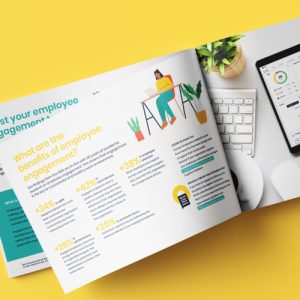
Global Employee Engagement Index™
A comprehensive overview of employee engagement with benchmarks from 57 countries with essential lessons for your HR strategy .
Credit Suisse: Predicting turnover
Area for improvement:
Credit Suisse is a financial services company based in Switzerland that employs over 47,000 people. To reduce turnover, they tried to predict which employees were most likely to leave the company and when. It’s been estimated that the cost of replacing an employee can be anywhere between 30 and 400 percent of an employee’s salary, depending on seniority and experience. This is a substantial loss for a company the size of Credit Suisse.
Data and analysis: Because the Credit Suisse workforce is so large and since they have strong data tracking practices, the analytics team had substantial information on who left the company, why, and after how long. The team dug deeper to explore “the specific circumstances prior to the points of departure” by tracking over 40 variables, such as performance ratings, the time spent in a given role, and the size of an employee’s team.
Analytics and outcome: The resulting predictive people analytics model gave Credit Suisse the ability to accurately predict how likely an employee is to leave the organization in the next year based on as few as ten indicators. With these predictors, Credit Suisse is able to identify risk factors and address these issues with employees before they result in attrition.
Use the insights of departing employees to uncover hidden truths about your organization and minimize further unnecessary departures.
E.On: Absenteeism
Based in Essen, Germany, E.On is an electric company that employs approximately 78,000 people. When absenteeism rose above the acceptable benchmark set by their HR department, E.On used people analytics to determine the factors driving increased unscheduled time off. Depending on whether an employee is paid hourly or with an annual salary, absenteeism can cost a business anywhere between $2,660 and $3,600 per employee, annually. For an organization of E.On’s size, that potentially adds up to hundreds of millions of dollars.
Data and analysis: The people analytics team at E.On put together 55 hypotheses. Based on the available data, the team tested 21 hypotheses and finally validated 11 of them. What they found was that the duration and timing of vacation had the biggest impact on the frequency of unplanned time off for the rest of the year. Contrary to popular belief, employees selling back their vacation time to the company did not appear to have any statistically significant impact on absenteeism.
Analytics and outcome: Based on these insights, E.On implemented policy changes that encouraged managers to be more accommodating with how employees schedule time off. Employees are encouraged to schedule multiple breaks throughout the year with at least one larger vacation—a combination that reduces absenteeism. The findings from this people analytics initiative also provided the HR team with additional insights they can use to test other variables in the future.

Cisco: Choosing an office location
Area for improvement: This multinational technology conglomerate based out of San Jose, California employs over 75,000 people. When the time came to open a new regional office, the company used people analytics to determine the best building and location for it. The goal was to avoid wasted space, create a positive work environment for employees, and attract the right talent to the organization. Data and analysis: With 266 Cisco offices across 87 countries, their People Planning, Analytics and Tools department were able to source data about office usage rates and average costs within the organization. Senior Director Ian Bailie and his team also looked at the building’s neighborhood and the location’s community to evaluate their respective potential impact on business performance. Most importantly, the analytics team explored the availability of talent, specifically from neighboring universities, relative to the number of competitors in the area.
Analytics and outcome: Because of Bailie and his team’s findings, the company decided to go with a different location than they first had their eye on. Their research found that the original choice would have left the recruitment team struggling to fill the necessary roles. The findings also changed Cisco’s process for opening new offices by bringing people analytics into the discussion much earlier. Planning, staffing, and operating new offices became much more resource efficient.
These are just a few real-world examples of how HR analytics can be used to improve business outcomes. People analytics focuses on an organization’s most valuable resource, its employees, and empowers them to do their best work to benefit the company and its larger goals. Prioritize data and regular reporting to gain meaningful insights and actionable takeaways. Talk to Effectory today to make people analytics a key part of your HR strategy .

Book a free demo. See our solutions in action.
Effectory is Europe’s Leading provider of Employee Listening Solutions. Schedule a product demo and discover how to enhance your employees’ engagement.
Related themes
Related articles.
- SUGGESTED TOPICS
- The Magazine
- Newsletters
- Managing Yourself
- Managing Teams
- Work-life Balance
- The Big Idea
- Data & Visuals
- Reading Lists
- Case Selections
- HBR Learning
- Topic Feeds
- Account Settings
- Email Preferences
Human resource management
- Business management
- Business communication
- Collaboration and teams
- Corporate communications
- Corporate governance

4 Conversations Leaders in the #MeToo Era Should Be Ready For
- Sarah Beaulieu
- August 12, 2020
Hiring Without Firing
- Claudio Fernández-Aráoz
- From the July–August 1999 Issue
To Thine Own Staff Be Agreeable
- Gary Davies
- From the June 2007 Issue


Is Your Organization Ready for Permanent WFH?
- Maxim Sytch
- Lindred L Greer
- Lindy Greer
- August 18, 2020
The Case of the Religious Network Group
- Ray Friedman

Workers Don’t Have the Skills They Need – and They Know It
- James Bessen
- September 17, 2014
When to Give Up on Your Goals
- Dorie Clark
- February 06, 2012

5 Ways a Crisis Can Help You Cultivate a Growth Mindset
- Susan (Sue) Ashford
- Susan J. Ashford
- August 20, 2020
It’s OK If Going to a Conference Doesn’t Feel Like Real Work
- Karen Dillon
- October 07, 2015
Women of the Workplace, Uniting
- Sylvia Ann Hewlett
- November 05, 2009

How to Lead When Your Team Is Exhausted — and You Are, Too
- Merete Wedell-Wedellsborg
- December 15, 2020

Is Your Company Using Employee Data Ethically?
- March 13, 2017

Building Trust Between Your Employees and Freelancers
- Jon Younger
- Michael Kearns
- March 15, 2017
The Online Talent War
- John Sviokla
- April 24, 2008

8 Ways to Build an Employee Resource Group for Parents
- Daisy Dowling
- November 11, 2020

Research: What Do People Need to Perform at a High Level?
- Zorana Ivcevic
- Robin Stern
- Andrew Faas
- May 17, 2021
How to Pay Your Sales Force
- John P. Steinbrink
- From the July 1978 Issue
How to Keep Your Star Performers in Trying Times
- December 09, 2009

Is HR the Most Analytics-Driven Function?
- Thomas H. Davenport
- April 18, 2019
How Business Can Help Measure Education Outcomes that Matter
- Alan Kantrow
- January 09, 2014

Qingdao TGOOD Electric Corporation
- F. Warren McFarlan
- Zheng Xiaoming
- October 30, 2012

HBR's 10 Must Reads 2019: The Definitive Management Ideas of the Year from Harvard Business Review (with bonus article "Now What?" by Joan C. Williams and Suzanne Lebsock) (HBR's 10 Must Reads)
- Harvard Business Review
- Joan C. Williams
- Michael E. Porter
- Marco Iansiti
- November 06, 2018
Dick's Sporting Goods: Getting Out Of The Gun Business (A)
- George A. Riedel
- January 15, 2021
Malden Mills (A) (Abridged)
- Nitin Nohria
- Thomas R. Piper
- March 18, 2010
SG Cowen: New Recruits
- Thomas J. DeLong
- Vineeta Vijayaraghavan
- May 13, 2002
General Electric: Jack Welch's Second Wave (A)
- Christopher A. Bartlett
- Kenton W. Elderkin
- June 28, 1991

Racial Justice: Tools for Preparing Your Team for the Future
- Robert Livingston
- Laura Morgan Roberts
- Anthony J. Mayo
- December 01, 2020
Godiva Japan: Think Local, Scale Global
- Rohit Deshpande
- Akiko Kanno
- January 02, 2017
Coastal Uniforms
- David J. Sharp
- December 20, 2004

What I Didn't Learn in Business School: How Strategy Works in the Real World
- Patricia Gorman Clifford
- October 12, 2010
Insider Trading Without Cooling Off
- Mark Simonson
- September 14, 2023
Digitas (A)
- Jay W. Lorsch
- Ashley C. Robertson
- July 27, 2004
Michael Ovitz and The Walt Disney Co. (A)
- Alexis Chernak
- November 08, 2005
Loss Prevention at Mac's Convenience Stores (A)
- Francesca Gino
- Katherine DeCelles
- Olivia Hull
- November 16, 2017
- Lynda M. Applegate
- James T. Kindley
- April 20, 2020
RKO Warner Video, Inc.: Incentive Compensation Plan
- George P. Baker
- Samuel L. Shimer
- October 20, 1989
Continental Airlines: The Go Forward Plan
- Frank Douglas
- October 14, 2009
Pre-Paid Legal Services, Inc.
- Paul M. Healy
- Jacob Cohen
- November 12, 1999
Michael Phelps: "It's Okay to Not Be Okay"
- Boris Groysberg
- Carin-Isabel Knoop
- Michael Norris
- October 27, 2020
Oriental Land Co., Ltd. -Tokyo Disney Resort
- Ramon Casadesus-Masanell
- April 23, 2020
Popular Topics
Partner center.
5 Ideas for Human Resources Case Studies
- Published May 31, 2018
- Last Updated April 8, 2022
Find Your Degree!
Ideas for Case Studies in the Human Resource Field
- Work-Life Balance in Large Organizations
- Exploring Socio-Economic Diversity
- Student Collective Bargaining Act
- Integrated Exercises for Designing a Pay Structure
- Conflict and Team Dynamics
Human Resource Management is a huge field that impacts several different areas of business and even other personal aspects of employees. Professionals and managers within the field must tackle issues with compensation, benefits, employee & labor relations, employment law, training, employee development, workforce planning, and in today’s modern climate, strategy.
Since the field is all-encompassing, it’s never been more crucial for future human resource managers to study for a graduate degree. Part of the curriculum requirement in most respected HRM programs will be to complete a case study. Students are expected to take an in-depth look at a subject of study and analyze the data gathered to support their thesis. Coming up with Human Resources case studies can be challenging.
Ranking: 50 Most Affordable Small Colleges for an HR Degree
1 – Work-Life Balance in Large Organizations
The American culture is centered around hard work. While this is a positive motivation in some cultures, the lack of work-life balance can be frowned upon in others. The focus of the Work-Life Balance in Large Organizations case study is to analyze how the changing demographics in the country, along with challenges that recruiters have finding candidates, have created a greater need for larger companies to offer more flexible arrangements as a benefit.
2 – Exploring Socio-Economic Diversity
Strategic planning in HR is important when it comes to the labor force. This case study involves exploring how socioeconomic status affects employee turnover, scheduling, employee morale, customer complaints, and interdepartmental communications. The goal of this Human Resource case study is to see how to create synergy in a company made up of wealthy, middle-class and poverty-level employees.
3 – Student Collective Bargaining Act
Labor laws and constant updates in protections for employees and college students can affect the operations of the HR department as a whole. The purpose of this case study is for students to review the regulation set forth under the National Labor Relations Act to explore the labor relations process. Students will form their own union, negotiate contracts, administer contracts, and protect rights of the students in their union over the course of the study.
4 – Integrated Exercises for Designing a Pay Structure
Pay structure is extremely important to employees. In fact, it’s one of the top priorities on every worker’s list. This is why HRM students who want to work in management can benefit from completing a case student on designing a pay structure that is fair, easy to comprehend, motivating, and competitive. Research of compensation in the area and pay systems used in the field will be necessary to complete the study.
5 – Conflict and Team Dynamics
Conflict is present in every organization as employees with different personalities are all expected to interact with one another. A team’s performance can dramatically suffer when conflict is present. It’s important for HR managers to understand what factors contribute to conflict. This case study looks at how location, mergers, cultural values, personal beliefs, and intrapersonal needs can all affect perspectives and interactions.
There are plenty of great ideas for case studies available through the Society for Human Resource Management. These ideas all pertain to a different area of HRM in which students may want to specialize. Review the Human Resources case studies above and decide which one sounds most interesting.
Related Resource: What is Workforce Diversity?

Hacking the Case Interview

Have an upcoming Human Resources case interview and don’t know how to prepare? Don’t worry because we have you covered!
In this article, we’ll cover:
- What is a Human Resources case interview?
- How to solve any Human Resources case interview
- Essential Human Resources case interview frameworks
- Human Resources case interview example
If you’re looking for a step-by-step shortcut to learn case interviews quickly, enroll in our case interview course . These insider strategies from a former Bain interviewer helped 30,000+ land consulting offers while saving hundreds of hours of prep time.
What is a Human Resources Case Interview?
A Human Resources case interview is a type of interview used in the hiring process for HR consulting-related roles, where candidates are presented with hypothetical or real-world HR scenarios and are asked to analyze, solve, and provide recommendations for the given situations.
The purpose of a HR case interview is to assess the candidate's problem-solving skills, analytical thinking, HR knowledge, and ability to apply HR principles in practical situations.
During a HR case interview, candidates are typically given a description of a specific HR challenge, issue, or scenario.
They are then expected to discuss their thought process, ask clarifying questions, identify the underlying problems, propose possible solutions, and explain the rationale behind their recommendations.
The interviewers are looking for candidates who can demonstrate their ability to think critically, understand the complexities of HR issues, and offer strategic and practical solutions.
The scenarios presented in HR case interviews can cover a wide range of topics within the HR field, including:
- Talent Acquisition and Recruitment : Candidates might be asked to devise a strategy for attracting and selecting the best candidates for a specific position or organization
- Employee Development and Training : The interview scenario could involve designing a training program to improve employee skills and performance
- Performance Management : Candidates might need to address issues related to employee performance evaluation, feedback, and improvement
- Compensation and Benefits : Scenarios may revolve around designing competitive compensation packages or benefits programs
- Diversity and Inclusion : Candidates could be asked to develop initiatives to promote diversity and inclusion within the workplace
- Employee Relations and Conflict Resolution : The case might involve managing interpersonal conflicts or addressing employee grievances
- Organizational Change and Restructuring : Candidates could be presented with scenarios related to managing organizational changes, such as mergers, acquisitions, or restructurings
- HR Strategy and Planning : The case could require candidates to develop long-term HR strategies aligned with the organization's goals
The key to performing well in a HR case interview is to demonstrate a structured approach to problem-solving, a solid understanding of HR principles and best practices, clear communication skills, and the ability to think strategically.
Candidates should break down the problem, consider multiple perspectives, and provide practical and actionable recommendations.
It's important to note that the format and structure of HR case interviews can vary between companies. Some companies might provide candidates with written case materials to review in advance, while others might present the case during the interview itself.
As with any interview, thorough preparation, practice, and research on the company's HR practices and industry trends are essential for success in a HR case interview.
How to Solve a Human Resources Case Interview
There are seven steps to solve a Human Resources case interview.
1. Understand the case
Understanding the case scenario is the foundation of effective problem-solving. Read or listen to the scenario carefully, absorbing the context, key stakeholders, and central issues.
For example, if the case presents a situation involving declining employee morale and engagement, you'd want to grasp the factors contributing to this decline and the potential consequences for the organization.
2. Ask clarifying questions
Asking thoughtful clarifying questions demonstrates your ability to extract crucial details and gain a comprehensive understanding of the situation.
For instance, if the case revolves around a sudden increase in turnover, you might inquire about specific departments or roles affected, reasons employees cite for leaving, and any recent organizational changes that could be relevant.
3. Develop a structured approach
Structuring your analysis provides a roadmap for addressing the case logically. A structured framework ensures you cover all necessary aspects and maintains a clear flow of your analysis.
The next section of this article covers essential frameworks you should be familiar with in detail.
4. Gather information
After understanding the case and asking clarifying questions, use the information you've gathered to delve deeper into the issues. Collect data from the case materials and consider applying relevant HR concepts.
For instance, if the case involves a performance issue among a certain team, you'd want to assess the team dynamics, individual competencies, and possible external factors influencing performance.
5. Propose solutions
Based on your analysis, propose concrete and actionable solutions for each identified issue. These solutions should align with HR best practices and the organization's values.
If the case highlights a challenge related to attracting top talent, your solutions could range from improving employer branding to enhancing the interview process to increase candidate quality.
6. Evaluate trade-offs
Weighing the pros and cons of each solution demonstrates your critical thinking. Discuss the potential benefits, drawbacks, and implications of implementing your proposed solutions. This showcases your ability to consider multiple perspectives.
For example, when addressing an employee retention problem, you'd need to assess the costs of implementing retention programs versus the costs of continued turnover.
7. Develop a recommendation
Culminate your analysis by crafting a well-founded recommendation that considers the organization's goals, HR best practices, and the context of the case. Your recommendation should offer a clear path forward.
If the case centers on improving diversity and inclusion, your recommendation might encompass strategies such as unconscious bias training, diverse recruitment initiatives, and mentoring programs.
In addition to Human Resources case interviews, we also have additional step-by-step guides to: market entry case interviews , growth strategy case interviews , M&A case interviews , pricing case interviews , operations case interviews , and marketing case interviews .
Essential Human Resources Case Interview Frameworks
There are a few Human Resources case interview frameworks you should be familiar with. These are helpful ways of organizing your thoughts and ideas into a structured and systematic approach.
However, we do not recommend using these frameworks word-for-word. You should demonstrate to the interviewer that you can think critically for yourself instead of relying on memorized frameworks.
You should instead be creating your own unique and tailored framework for each Human Resources case interview scenario.
Therefore, your framework may include parts and pieces of the frameworks below, but you should not just copy them.
The PPT Framework
The PPT framework stands for People, Processes, and Technologies, and it's a valuable approach for analyzing and solving Human Resources (HR) challenges in case interviews. This framework focuses on three key dimensions that are often interconnected in HR scenarios. Let's delve into each component:
In this dimension, you'll consider the human aspects of the HR challenge presented in the case. This involves assessing how employees, managers, and stakeholders are affected by the issue and how they contribute to potential solutions.
Some points to address include:
- Employee Engagement and Morale : Examine how the challenge impacts employee satisfaction and motivation
- Leadership and Management : Evaluate how managers' actions and behaviors contribute to or alleviate the challenge
- Communication and Collaboration : Analyze how effective communication and collaboration among employees can influence the situation
- Training and Development : Consider how training and development initiatives can address skill gaps related to the challenge
- Organizational Culture : Explore how the existing culture supports or hinders the resolution of the challenge
2. Processes
This dimension focuses on HR processes, policies, and practices that are relevant to the case. You'll assess how these existing processes might contribute to the challenge and propose adjustments or new processes to address it.
Some aspects to consider are:
- Recruitment and Onboarding : Evaluate how the recruitment process might be impacting the issue and suggest improvements
- Performance Management : Examine how performance evaluation and feedback processes relate to the challenge
- Employee Development : Analyze training, mentoring, and career advancement processes as they pertain to the issue
- Compensation and Benefits : Consider whether compensation structures contribute to or mitigate the challenge
- Conflict Resolution : Address how existing conflict resolution processes can be used to address any interpersonal challenges
3. Technologies
This dimension focuses on the technological tools and systems that can support HR processes and solutions. Modern technologies can greatly impact HR practices and provide innovative ways to solve challenges.
Consider the following:
- HR Information Systems (HRIS) : Explore how HRIS can streamline processes and provide data for decision-making
- Performance Tracking Tools : Assess how tools for monitoring employee performance can aid in addressing the challenge
- Learning Management Systems (LMS) : Examine how an LMS could be used for training and development initiatives
- Recruitment Platforms : Analyze how technology can optimize recruitment efforts and attract suitable candidates
- Employee Feedback Platforms : Consider tools that facilitate employee feedback and engagement measurement
The PESTEL Framework
The PESTEL framework is a strategic analysis tool that helps examine various external factors affecting a business or organization. It stands for Political, Economic, Social, Technological, Environmental, and Legal factors.
When applied to Human Resources (HR) case interviews, the PESTEL framework allows you to consider the broader context that impacts HR challenges and solutions.
Here's how you can use each dimension of the framework in the context of HR cases:
1. Political Factors
Political factors encompass the impact of government policies, regulations, and political stability on HR challenges. In the context of HR case interviews, consider how political factors influence:
- Labor Laws and Regulations: Analyze how labor laws and regulations affect HR practices, such as employment contracts, working hours, and employee rights.
- Immigration Policies: Examine how immigration policies impact talent acquisition and workforce diversity.
- Health and Safety Regulations: Consider how workplace safety regulations influence HR strategies for employee well-being.
2. Economic Factors
Economic factors relate to the broader economic environment, including inflation, economic growth, and market conditions. In HR case interviews, consider how economic factors affect:
- Labor Market Conditions : Evaluate how economic cycles impact talent availability, hiring, and compensation negotiations
- Compensation and Benefits : Examine how economic conditions influence decisions about employee compensation and benefits packages
- Budget Constraints : Analyze how economic fluctuations can affect HR budgets for training, development, and recruitment
3. Social Factors
Social factors encompass cultural trends, demographic shifts, and societal attitudes that impact HR challenges. In HR case interviews, think about how social factors influence:
- Diversity and Inclusion : Consider how societal attitudes towards diversity impact HR initiatives for inclusion and representation
- Work-Life Balance : Examine how changing societal expectations affect employee preferences for work-life balance and flexible arrangements
- Generational Differences : Analyze how different generations' values and expectations influence HR strategies for employee engagement and motivation
4. Technological Factors
Technological factors refer to advancements that impact HR practices and solutions. In HR case interviews, consider how technological factors influence:
- HR Information Systems (HRIS) : Examine how technology can enhance HR processes, such as data management, recruitment, and performance evaluation
- Remote Work Technology : Analyze how technology enables remote work and its implications for HR policies and practices
- Learning Platforms : Consider how technology supports employee learning and development through online training platforms
5. Environmental Factors
Environmental factors pertain to sustainability, ecological concerns, and corporate social responsibility. In HR case interviews, consider how environmental factors influence:
- Sustainability Initiatives : Examine how an organization's commitment to environmental sustainability impacts HR strategies, such as commuting policies and eco-friendly practices
- Employee Well-being : Analyze how a healthy and sustainable work environment contributes to employee well-being and job satisfaction
6. Legal Factors
Legal factors encompass laws and regulations that affect HR practices and employment relationships. In HR case interviews, consider how legal factors influence:
- Employment Contracts : Examine how legal requirements for employment contracts and agreements shape HR policies
- Discrimination and Harassment Laws : Analyze how legal regulations on discrimination and harassment impact HR initiatives for diversity and inclusion
- Data Privacy Regulations : Consider how data privacy laws influence the collection and management of employee data
Human Resources Case Interview Examples
Example #1 : A company's employee engagement has been declining. Develop an HR strategy to address this issue.
To solve this case, you would start by understanding the current engagement levels, analyzing potential causes, and identifying specific areas for improvement. Then, propose initiatives that focus on aspects like recognition programs, career development opportunities, and fostering a positive work culture. Consider how each initiative aligns with the organization's values and goals, and provide an implementation plan detailing roles, timelines, and metrics for success.
Example #2 : A retail company is experiencing high turnover rates among its sales team. How would you address this issue?
Begin by assessing the reasons behind the turnover, considering factors such as compensation, work environment, and career growth. Propose solutions such as conducting exit interviews to gather feedback, adjusting compensation packages, implementing mentorship programs, and providing clear paths for career advancement. Highlight the importance of retaining talented employees and outline the steps needed to execute your recommendations.
Example #3 : A tech company wants to enhance diversity and inclusion in its workforce. Develop strategies to achieve this goal.
Start by understanding the company's current demographics and analyzing potential barriers to diversity. Propose initiatives such as unconscious bias training for hiring managers, targeted recruitment efforts to attract underrepresented groups, and affinity groups to foster a sense of belonging. Emphasize the value of diversity in driving innovation and ensuring a representative workforce, and provide methods to measure the impact of your strategies.
Example #4 : An organization's performance management process is outdated. How would you redesign it?
Begin by evaluating the existing performance management process and identifying its weaknesses. Propose solutions such as implementing continuous feedback mechanisms, setting clear performance goals aligned with company objectives, and utilizing technology for real-time performance tracking. Emphasize the importance of employee development and aligning individual goals with overall organizational success.
Example #5 : A multinational company wants to create a leadership development program. How would you design and implement it?
Start by identifying the leadership skills and competencies required for the company's future success. Develop a comprehensive program that includes leadership training workshops, mentorship opportunities, and experiential learning projects. Consider how to measure the program's effectiveness and tailor the content to different leadership levels within the organization.
Example #6 : A company wants to establish a remote work policy post-pandemic. How would you design and implement this policy?
Begin by analyzing the organization's needs, considering roles suitable for remote work, and potential challenges. Develop a policy that outlines expectations, communication protocols, performance measurement methods, and technology requirements. Address concerns about productivity and collaboration and provide guidelines for maintaining work-life balance while working remotely.
Example #7 : Two companies are merging, leading to cultural clashes and resistance among employees. How would you manage this change?
Begin by understanding the unique cultures of both companies and identifying areas of alignment and divergence. Develop a change management plan that includes clear communication, involving key stakeholders in decision-making, and addressing concerns through town hall meetings and Q&A sessions. Emphasize the benefits of the merger and outline how employees' roles and responsibilities will be impacted positively.
For more practice, check out our article on 23 MBA consulting casebooks with 700+ free practice cases .
Land Your Dream Consulting Job
Here are the resources we recommend to land your dream consulting job:
For help landing consulting interviews
- Resume Review & Editing : Transform your resume into one that will get you multiple consulting interviews
For help passing case interviews
- Comprehensive Case Interview Course (our #1 recommendation): The only resource you need. Whether you have no business background, rusty math skills, or are short on time, this step-by-step course will transform you into a top 1% caser that lands multiple consulting offers.
- Case Interview Coaching : Personalized, one-on-one coaching with a former Bain interviewer.
- Hacking the Case Interview Book (available on Amazon): Perfect for beginners that are short on time. Transform yourself from a stressed-out case interview newbie to a confident intermediate in under a week. Some readers finish this book in a day and can already tackle tough cases.
- The Ultimate Case Interview Workbook (available on Amazon): Perfect for intermediates struggling with frameworks, case math, or generating business insights. No need to find a case partner – these drills, practice problems, and full-length cases can all be done by yourself.
For help passing consulting behavioral & fit interviews
- Behavioral & Fit Interview Course : Be prepared for 98% of behavioral and fit questions in just a few hours. We'll teach you exactly how to draft answers that will impress your interviewer.
Land Multiple Consulting Offers
Complete, step-by-step case interview course. 30,000+ happy customers.
- Question Papers
- Scholarships
HRM Case Studies With Solutions
Let’s study Human Resource Management Case Studies with solutions. HRM Case studies play a vital role in management education especially in subjects like Human Resource Management (HRM), Personnel Management, PAAP and related subjects.
It gives a clear picture of the concepts when you practise them through case studies. Here we have given some live HRM case studies that are short, useful & interesting. This will allow you to think beyond the theoretical part and make you capable to apply the concepts in real-time situations.
Table of Contents
We are also providing solutions which are free of cost. We welcome your feedback about these HRM case studies.
Below are short and simple Case Studies on HRM with Solutions, Questions, and Answers.
HRM Case Study 1
Harsha and Franklin both of them are postgraduates in management under different streams from the same B-School. Both of them are close to each other from the college days itself and the same friendship is continuing in the organization too as they are placed in the same company, Hy-tech technology solutions. Harsha placed in the HR department as employee counsellor and Franklin in the finance department as a key finance executive. As per the grade is concerned both are at the same level but when responsibility is concerned Franklin is holding more responsibility being in core finance.
By nature, Harsha is friendly in nature and ready to help the needy. Franklin is silent in nature ready to help if approached personally and always a bit egoistic in nature. They have successfully completed 4 years in the organization. And management is very much satisfied with both of them as they are equally talented and constant performers.
Harsha felt that now a day’s Franklin is not like as he uses to be in the past. She noticed some behavioural changes with him. During general conversations, she feels that Franklin is taunting her that she is famous among the employees in the organization, on the other hand, he is not even recognized by fellow employees.
One morning Mr. Mehta General Manager Hy-tech technology solutions shocked while going through the mail received from Franklin about his resignation. Mr. Mehta called Harsha immediately and discussed the same as she is close to Franklin. By hearing the news Harsha got stunned and said that she does not know this before she also revealed here current experience with him. Mr. Mehta who does not want to lose both of them promised her that he will handle this and he won’t allow Franklin to resign.
In the afternoon Mr. Metha took Franklin to Canteen to make him comfortable after some general discussion he starts on the issue. Franklin, after some hesitation, opened his thinking in front of Mr. Mehta. The problem of Franklin is
1) when he comes alone to canteen the people from others don’t even recognize him but if he accompanied by Harsha he gets well treated by others.
2) one day Both of them entered the company together the security in the gate wished them but the next day when he came alone the same security did not do so.
3) Even in meetings held in the office, the points raised by Harsha will get more value so many times he keeps silent in the meeting.
It happens to Franklin that he has to face such degradation in each day of work which totally disturbs him. Franklin also questioned that ” Harsha and myself have the same qualification, from the same institute, passed out in the same year both with first class. We have the same number of experiences in this organization. Moreover, the responsibilities with me are more valuable than those of Harsha. After all these things if I am been ignored or unrecognized by the fellow employees my ego does not allow me to continue here”.
By listening to this statement Mr.Metha felt that it is not going to be very difficult to stop his resignation. Mr. Mehta explained Franklin the reasons for such partial behaviour of the employees. After listening to Mr. Mehta Franklin said sorry for his reaction and ready to take back his resignation. And he called Harsha and spoke with like before.
Questions for HRM Case Studies: Case Study 1
Find the reason that Mr. Mehta would have given to Franklin.
Solution for HRM Case Study 1
Mr. Mehta listening to this case understood the situation and realized the reason behind the partial response given by the employees towards Franklin and Harsha. As Franklin said both Harsha and Franklin are passed out from the same college in the same year. Both of them joined the company together both have the same experience. Even in performance-wise, both stands in the same level i.e. both are constant performers and good performers.
Franklin analyzed all the above-said similarities between him and Harsha. He also stated that he holds more responsibility than that of Harsha. One thing Franklin did not notice or analyzed is the job profile of Harsha. It is true that Franklin holds more responsibility than that of Harsha but when it comes to direct interaction with employees Harsha wins the employees’ attention in this aspect. Harsha being a counsellor in HR she faces the employees every day. She developed good rapport among the employees due to her friendly nature. She is always remembered by the employees whenever they face any problem as she gives good counselling and most of the time she suggests the best solutions for such issues.
Franklin though holding a key position in finance his profile does not allow him to interact with the employees. Though he has a helping tendency he does only when someone approached him personally. As the employees of other departments do not have any relation with him they never approach him for help. Mr. Mehta having a good experience understood these things when Franklin explained his problems one by one. Later he relates each situation, explained by Franklin with the above said reasons and made Franklin understood the reality.
Mr. Mehta said that the security in the gate or the employees in the canteen who recognized Harsha and not Franklin would have interacted with her during counselling or approached her for any issues. And as usual, she would have counselled well or solved the issues of them that is the reason why they treat her and wish her whenever where ever they meet her. When it comes to the case of Franklin they would have hardly met him or interacted with him.
When it comes to the point that even in-office meetings Harsha, points are valued so Franklin keeps mum. For this, Mr. Mehta replied that the points put forward by her would be related to employees or from the employees’ point of view which actually the management wants to know so they give value to her points. And as quoted Fraklin after, one or two such incidents keep silent in the meeting. He never made an attempt to raise some suggestions so management does not have any option to listen to that suggestion.
After listening to all the explanations given by Mr. Mehta Franklin realized his mistake and felt proud of the Rapport developed by Harsha among the employees. He said to Mr. Mehta that he will take back his resignation. And rushed to Harsha to make an apology and to meet her as a friend as like his college days.
HRM Case Studies Part 2:
HRM Case Study 2
Watson Public Ltd Company is well known for its welfare activities and employee-oriented schemes in the manufacturing industry for more than ten decades. The company employs more than 800 workers and 150 administrative staff and 80 management-level employees. The Top-level management views all the employees at the same level. This can be clearly understood by seeing the uniform of the company which is the Same for all starting from MD to floor level workers. The company has 2 different cafeterias at different places one near the plant for workers and others near the Administration building. Though the place is different the amenities, infrastructure and the food provided are of the same quality. In short, the company stands by the rule of Employee Equality.
The company has one registered trade union. The relationship between the union and the management is very cordial. The company has not lost a single man day due to strike. The company is not a paymaster in that industry. The compensation policy of that company, when compared to other similar companies, is very less still the employees don’t have many grievances due to the other benefits provided by the company. But the company is facing a countable number of problems in supplying the materials in the recent past days. Problems like quality issues, mismatch in packing materials (placing material A in the box of material B) incorrect labelling of material, not dispatching the material on time, etc…
The management views the case as there are loopholes in the system of various departments and hand over the responsibility to the HR department to solve the issue. When the HR manager goes through the issues he realized that the issues are not relating to the system but it relates to the employees. When investigated he come to know that the reason behind the casual approach by employees in work is
- The company hired new employees for a higher-level post without considering the potential internal candidates.
- The newly hired employees are placed with higher packages than that of existing employees in the same cadre.
- Narrate the case with a suitable title for the case. Justify your title.
Solution for HRM Case Case Study 2
Employee Equality is not the need for every hour. In the above-said case, Watson Ltd had provided all facilities to employees at each grade in an equal manner. But still, the employees started creating certain issues like materials are meeting the quality supply schedule is not met etc. And the HR manager said that the policy of hiring new employees for the higher post without considering old potential employees is the major problem.
“Employee recognition VS Employee equality ”. As the HR manager states that employees are not been recognized for the potential rather the company has gone for new recruitment. Because of which the company faces problems.
- The points rose by the HR manager as the reason for the latest issues in the organization is justifiable or not. Support your answer with Human resource related concepts.
Yes, the points raised by the HR manager is justifiable because “Human beings are social Animals as popularly” said by many Human resources Scholars. So human minds demand social recognition, self-respect, consideration, etc for their work and performance.
In the above-said case, even the company provides and stands by the concept of employee equality when it fails to recognize the potential talents of existing employee they felt dissatisfaction towards the organization and they showed in the way of quality issues and slow down production.
Related HR concept.
Slow down Production:
The concept of slow down production is a type of employee’s strike. The Industrial Relations sates that when the employee wants to show their dissatisfaction to the management but don’t want to go for strike they follow slow down strike. The impact of which will be understood after a particular time period.
Employee Recognition:
Human beings can be easily motivated by Rewards and recognition than that of money. In this case, also the employee is not satisfied even after all facilities just because of the reason that they are not recognized.
Hawthrone Experiment:
In the four types of test conducted by Elton Mayo, the remarkable hike in production is recognized in the stage when they consulted the employees for the management decisions regarding them. The same thing was missing in Watson Ltd. Before the new hires if the management consulted the employees both management and employees would have avoided this issue
Hygiene Factor:
The theory of hygiene factors states that there are certain factors related to employees the presence of which will not create a major impact but the absence of such things will lead to a de motivation to the employees. Employee Recognition is one such factor when the management fails to do so it will Detroit the employees to a great extent.
- Help the organization to come out from this critical issue. If you are in the role of HR manager what will be your immediate step to solve this case.
If I was in the post of the HR manager I will try to discuss the issue and ask for the reason from the management for new recruiting rather than considering available potential talents. I will personally analyse the reasons provided by management and if acceptable I will discuss the same with the employees. Everything is possible with a discussion. So I will discuss and convince the employee that this won’t happen again in the organization. I will also initiate the collective bargaining process for reasonable salary hike for the existing employees.
How to Download PDF of HRM Case Studies
You can copy and use this text for personal use.
This is all about HRM Case Studies with solutions. You can contact us for the PDF or PPT format.
You’ll also like Top 25 Human Resource Management MCQ With Answers (Updated)
Share with friends
Access to 13 certificate programs, courses and all future releases
Personal Coaching and Career Guidance
Community and live events
Resource and template library

- HR Case Management: Benefits and...
HR Case Management: Benefits and Best Practices

What is HR case management?

Types of HR cases
- Onboarding – New employees often have many questions about the organization, key HR processes and procedures, policies, and benefits as they begin their journey into a new organization. HR case management software is a great tool to answer their questions and provide a positive employee experience as their journey commences.
- Leave – Managing leave can become complicated as each employee’s life situation is unique and can change without notice. However, with case management software, the HR team members can address each employee’s unique needs promptly and in compliance with statutory requirements.
- Employee grievances – Employee relations cases can also be complicated. Employees are usually trained and coached, so they collaborate professionally and cordially with their peers. However, there are still instances where Employee Relations specialists or the HR function must intervene to resolve disputes between employees. Case management software is a critical tool for ER specialists to manage and resolve grievances in a timely and professional manner.
- Policies & procedures – There are always questions from employees that sound like, ‘What should we do in this scenario?’ and “How should we do it?” There are usually policies and guidelines that can answer these questions. Case management software can help provide the answers or guide employees to FAQs stored within the system.
- Performance – Employees may want to know how their performance is being measured and if there are compensatory benefits associated with their performance, like merit increases and bonuses. This is another type of query that your organization can quickly address through case management software.
- Payroll & taxes – HR case management system helps payroll specialists focus on payroll administration by providing some documented responses. It also creates pockets of time for them to resolve those complex problems that do arise and need special attention.

Benefits of HR case management software
| The software gives immediate access to HR. Employees do not have to wait for a meeting with HR to ask a question or communicate a concern. | |
| HR case management technology enables employees as well as HR to track the status of each case by giving them ticketing numbers. | |
| Cases can be prioritized and assigned through the system. This helps HR address a myriad of issues in a timely and efficient manner. A harassment complaint may be more critical to address than adding a dependent to a benefit plan. However, adding the dependent can be quickly addressed and removed from the queue, so there is more time and resources to address the harassment complaint. | |
| It is easy to pass cases to other employees, teams, or management with all the information needed already there. This is critical to providing a positive employee experience. Cases that linger with an inexperienced HR employee not only delay the cases from being resolved but can make the resolution of the case more complicated than it needs to be. An HR case management software can prevent this by ensuring it goes to the right HR person with the requisite experience to efficiently resolve the case. | |
| Investigations may become more manageable as employees are provided with a standard template to describe and communicate complaints. When all the information is accessible in one place in a standard format, HR can respond with a customized response to each complaint. | |
| The technology solution reduces repetitive questions by supporting FAQs and HR knowledge base that your employees can easily access, defining workflows of different case types. This frees up the time of the HR team to focus on those issues that do need more in-depth analysis. | |
| Multiple team members can collaborate to resolve complex cases as they all have access to the same information at the same time. |
HR case management best practices
1. choose a reliable hr case management software.
- ServiceNow – This platform may eliminate frustration and improve employee satisfaction with efficient, intelligent services. It provides efficient service to employees with ServiceNow HR Service Delivery. It may use fewer resources to serve more employees by minimizing repetitive tasks with automated workflows and case management. The platform manages lifecycle events like onboarding and offboarding across multiple departments. ServiceNow enterprise-wide workflows increase efficiency and provide full visibility of the entire process.
- HR Acuity – HR Acuity is a technology platform specifically built for employee relations and investigations management. Organizations can build a better workplace by easily performing thorough and comprehensive fact-finding into allegations of employee conduct, minimizing legal and financial risks. The platform includes tools for consistent documentation, search and reporting, and post-hire and exit interviews.
- AdviserPlus – A cloud-based technology solution that revolutionizes the management of employee relations processes for HR, line managers, and employees. An innovative technology that provides HR, line managers, and employees with easy access to the right ER tools at the right time to support taking the necessary action with confidence, delivering efficiencies, reducing risk, and capturing data to feed actionable insight.
- Leena AI – This software offers an AI-powered HR assistant providing instant responses to employee queries, improving employee experience. Leena AI is available on multiple platforms and channels of communication. It uses standard platform UI to minimize confusion and the best user experience. The tool can communicate with multiple employees at the same time and eliminates the waiting between asking a question and receiving an answer.
- Mihi – Mihi meets all your global Human Capital Management (HCM) needs in one system. It is a unique HCM solution where country-specific labor, HR, benefits, and data privacy requirements are pre-built to keep you compliant with local laws while giving your employees a robust self-service tool to manage leave, time and attendance, and more. Mihi’s user-friendly modules make it easy for employees to manage their day-to-day needs while the system logs all critical data and makes it available to HR.
- i Casework – iCasework allows your HR team to effectively log, manage and analyze their casework, ensuring processes are handled consistently and within time scales. The solution also enables employees and line managers to log and track a wide range of HR requests, from general inquiries to requests to retire. Intelligent use of the solution’s self-service features through web-based staff portals as well as mobile devices enables significant efficiency gains.
2. Onboard your employees properly
3. ensure different levels of access, 4. create comprehensive and accurate documentation.
- The processes are aligned to statuary regulations like HIPAA ,
- Processes and responses are standardized and not resulting in disparate treatment .
5. Identify frequently occurring issues
Summing it up, weekly update.
Stay up-to-date with the latest news, trends, and resources in HR

Rhonda Gardner
Related articles.

HRIS 101: All You Need To Know in 2024

AI-Based Coaching: 5 Considerations for HR

Employee Feedback Strategy: 5 Approaches to Consider
New articles.

Interview Notes: 9 Reasons To Take & Best Practices To Follow (+Free Templates)

Your (2024) Guide to Employee Participation: What It Is and How To Increase It

25 Employee Onboarding Statistics & Trends You Must Know in 2024
Subscribe to our weekly newsletter, are you ready for the future of hr.
Learn modern and relevant HR skills, online


Case study: Building HR capability at Tesco
Harriet Buckley, People Capability Manager, Tesco

"The People Development Partnership will help us strengthen our capability and support colleagues across our People team to deliver their part in the business strategy. "We know that the world of work is constantly changing. Working closely with the CIPD gives us a brilliant opportunity to work together not only on how we deepen our own colleagues’ expertise, but also how we contribute to the wider profession. We very much see it as a two‐way thing. The CIPD is absolutely helping us strengthen our capability and, we can help develop the profession as well."
Harriet's story
The People Development Partner relationship covers a lot of ground. To take one example, the CIPD helped Tesco on the development of three ‘shared people skills’ – Commercial ‘Know How’; Consulting and Partnering; and Colleague Expert – designed to equip colleagues with the necessary skills to deliver on strategy. These were neatly aligned with the CIPD’s new Profession Map.
Tesco prides itself on giving its colleagues the opportunity to get on. Learning and professional development is a high priority for its people and the business takes its investment in these opportunities seriously. Over the past three years it has supported over 80 colleagues through CIPD’s Experience Assessment, the rigorous process that sees busy HR and L&D practitioners utilise their experience to become CIPD members.
‘The spirit behind this investment is all about giving our colleagues the opportunity to get on – something we are really committed to as a business – and for them to gain recognition for the skills they have,’ says Harriet.
‘It’s also about professionalising our team. We’re very proud of the work we are doing with the CIPD and we know that helping colleagues invest in their development is key to our success. Developing new skills and encouraging colleagues to make time for their own professional development, is not only important in terms of their personal growth, but for the future success of Tesco.’
Emma Taylor, Tesco’s UK and ROI People Director believes that colleagues who have engaged in learning on the back of the People Development Partner have become ‘ambassadors’ for the experience and encourage others to take part. ‘They feel invested in and that is very fulfilling,’ says Emma. ‘That’s a basic benefit, but one not to be overlooked. Individuals come into work feeling energised and invested in because of the learning and development opportunities available to them, and so are more confident in the contribution they can make to the business.’
Tesco has also been working closely with the CIPD to develop innovative learning linked to their shared people skill, ‘Colleague Expert’. Learning on areas such as neuroscience and human behaviour supports colleagues in the People team to take more of an evidence-based approach to their work. The onus is on keeping the learning practical so that it can be easily applied.
‘We used to be quite internally focused in terms of our thinking,’ says Harriet. ‘But through our work with the CIPD, we’re better equipped to bring new thinking back into the business which helps us challenge the way we do things so that we get it right for colleagues.
‘The CIPD always give us a good, objective view in terms of what is happening in the world of work outside Tesco. That helps elevate our thinking and gives us different insights, which ultimately helps us get to a better outcome.’
Get in touch with us today to spark change

Want to create or adapt books like this? Learn more about how Pressbooks supports open publishing practices.
1.4 Cases and Problems
Chapter summary.
- Human resource management is the process of employing people, training them, compensating them, developing policies relating to the workplace, and developing strategies to retain employees. Three certification exams, which are offered by the Human Resource Certification Institute, can be taken to show HRM skills and become more marketable.
- Human resource management involves seven main areas: (1) staffing, (2) workplace policies, (3) benefits and compensation, (4) retention, (5) training, (6) employment laws, and (7) employee protection.
- Human resource managers need many different types of skills. Being able to organize, multitask, and communicate effectively, as well as having specific job skills, such as how to run a particular computer program, and a sense of fairness and ethics, is crucial to a successful career in HRM.
- There are many contemporary challenges associated with HRM. First, it is up to everyone in the organization to contain costs. HR managers need to look at their individual departments and demonstrate the necessity and value of their functions to the organization. HR managers can also help contain costs in several ways, such as managing benefits plans and compensation and providing training.
- The fast-changing nature of technology is also a challenge in HRM. As new technologies are developed, employees may be able to implement innovative ways of working such as flextime . HR managers are also responsible for developing policies dealing with cyberloafing and other workplace time wasters revolving around technology. Employee stress and lack of work-life balance are also greatly influenced by technology.
- Awareness of the changes in the economy allows the human resource manager to adequately plan for reductions and additions to the workforce.
- The aging and changing workforce is our final factor. As baby boomers retire, there likely will not be enough people to replace them, and many of the skills the baby boomers have may be lost. In addition, having to work with multiple generations at once can create challenges as different expectations and needs arise from multigenerational workforces.
Chapter Case
Changes, Changes
Jennifer, the owner and manager of a company with ten employees, has hired you to take over the HRM function so she can focus on other areas of her business. During your first two weeks, you find out that the company has been greatly affected by the up economy and is expected to experience overall revenue growth by 10 percent over the next three years, with some quarters seeing growth as high as 30 percent. However, five of the ten workers are expected to retire within three years. These workers have been with the organization since the beginning and provide a unique historical perspective of the company. The other five workers are of diverse ages.
In addition to these changes, Jennifer believes they may be able to save costs by allowing employees to telecommute one to two days per week. She has some concerns about productivity if she allows employees to work from home. Despite these concerns, Jennifer has even considered closing down the physical office and making her company a virtual organization, but she wonders how such a major change will affect the ability to communicate and worker motivation.
Jennifer shares with you her thoughts about the costs of health care on the organization. She has considered cutting benefits entirely and having her employees work for her on a contract basis, instead of being full-time employees. She isn’t sure if this would be a good choice.
Jennifer schedules a meeting with you to discuss some of her thoughts. To prepare for the meeting, you perform research so you can impress your new boss with recommendations on the challenges presented.
- Point out which changes are occurring in the business that affect HRM.
- What are some considerations the company and HR should be aware of when making changes related to this case study?
- What would the initial steps be to start planning for these changes?
- What would your role be in implementing these changes? What would Jennifer’s role be?
Team Activities
- In a group of two to three people, research possible career paths in HRM and prepare a PowerPoint presentation to discuss your findings.
- Interview an HR manager and discuss his or her career path, skills, and daily tasks. Present your findings to your class.
Human Resource Management Copyright © 2016 by University of Minnesota is licensed under a Creative Commons Attribution-NonCommercial-ShareAlike 4.0 International License , except where otherwise noted.
Case Studies: An Example of HR Policies in Action
- Employee Handbooks
- September 26, 2023

Case studies provide a valuable and practical understanding of how certain concepts, in this case, HR policies , are implemented in real-life situations. They offer insights into the importance and benefits of these policies in organizations. HR policies play a crucial role in creating a framework for managing employees and ensuring consistency in decision-making. They cover various aspects such as recruitment , employee development , performance management , and employee welfare . In this article, we will explore a case study that exemplifies how HR policies are put into action.
The case study focuses on a specific company, providing background information about the organization and the HR policies implemented. It delves into the results and impact of these policies on the company’s overall operations, employee satisfaction, and productivity. An analysis of the case study examines the strengths and successes of the HR policies, as well as the challenges faced and lessons learned during their implementation.
For organizations looking to implement or enhance their HR policies, implementation tips will be provided to guide them in developing effective policies that align with their goals and values. By studying real-life examples and analyzing their outcomes, organizations can gain valuable insights and make informed decisions when developing and implementing their own HR policies.
Importance and Benefits of Case Studies
Case studies play a crucial role in showcasing the importance and benefits of understanding HR policies in action. Here are some key reasons why case studies are valuable:
- Real-World Application: Case studies provide real-world examples of how HR policies are implemented and their impact on organizations and employees. They bridge the gap between theory and practice, allowing HR professionals to see how policies work in different scenarios.
- Learning Opportunities: Case studies offer valuable learning opportunities by presenting complex HR challenges and demonstrating how they were addressed. They provide insights into the decision-making process and the rationale behind HR policy choices.
- Problem-Solving Skills: Analyzing case studies helps HR professionals develop critical thinking and problem-solving skills. They learn to identify issues, consider multiple perspectives, and craft effective solutions based on the principles of HR policies.
- Enhanced Understanding: Through case studies, HR professionals gain a deeper understanding of the intricacies and nuances of HR policies. They can observe how policies are adapted and tailored to specific organizational contexts, industries, or legal frameworks.
- Evidence-Based Decision Making: Case studies provide evidence to support HR professionals’ decision-making process. By examining the outcomes and impacts of HR policies in real situations, they can make informed choices that align with organizational goals.
- Best Practice Identification: Case studies highlight best practices in HR policy implementation and management. By studying successful examples, HR professionals can identify effective strategies, innovative approaches, and lessons learned to apply in their own organizations.
- Professional Development: Case studies contribute to the professional development of HR practitioners. They offer opportunities for reflection, discussion, and the exchange of experiences with peers, fostering continuous learning and growth.
- Continuous Improvement: Analyzing case studies helps organizations and HR departments identify areas for improvement in their policies and practices. By examining the successes and failures of others, they can refine their own HR policies and enhance overall effectiveness.
- Legal and Ethical Considerations: Case studies often address legal and ethical dilemmas in HR. They provide insights into how organizations navigate complex issues, ensuring compliance with laws and regulations while upholding ethical standards.
- Engagement and Empathy: Case studies can evoke empathy by presenting real-life HR challenges faced by employees and organizations. They offer HR professionals an opportunity to understand the human side of HR policies and how they impact individuals and teams.
By utilizing case studies, HR professionals can gain a comprehensive understanding of HR policies and their practical implications, ultimately improving their ability to develop and implement effective HR strategies within their organizations.

Overview of HR Policies
Do you ever find yourself wondering, what are HR policies ? HR policies are a set of guidelines and procedures implemented by organizations to govern the behavior, actions, and decisions related to human resources management. Here is an overview of HR policies:
1. Recruitment and Selection: These policies outline the procedures for hiring and selecting employees, including job posting, application screening, interviewing, and background checks.
2. Employee Onboarding: Onboarding policies ensure that new employees receive a smooth transition into the organization, including orientation, training, and introductions to company culture and policies.
3. Compensation and Benefits: These policies define how employees are rewarded for their work, including salary structures, bonuses, incentives, and benefits such as health insurance, retirement plans, and paid time off.
4. Performance Management: Performance management policies establish how employee performance is assessed, including goal setting, performance reviews, feedback mechanisms, and performance improvement plans.
5. Employee Development: These policies focus on opportunities for employee growth and development through training programs, mentorship, coaching, and career advancement initiatives.
6. Employee Relations: Employee relations policies address workplace conduct, disciplinary actions, grievance procedures, conflict resolution, and maintaining a positive work environment.
7. Work-Life Balance: These policies promote a healthy work-life balance for employees, including flexible work schedules, telecommuting options, parental leave, and wellness programs.
8. Diversity and Inclusion: Policies related to diversity and inclusion ensure equal employment opportunities, prevent discrimination and harassment, and foster an inclusive and diverse work environment.
9. Health and Safety: These policies focus on creating a safe and healthy work environment, including workplace safety procedures, emergency response plans, and employee well-being initiatives.
10. Ethics and Confidentiality: Policies on ethics and confidentiality outline the expected ethical behavior of employees, confidentiality of company and employee information, and compliance with legal and regulatory requirements.
By implementing and effectively communicating these HR policies, organizations can establish consistent standards, promote fairness, compliance, and employee well-being, and create a positive work culture.
What are HR Policies?
HR policies, also known as Human Resources policies , are a set of guidelines and procedures that regulate the behavior, actions, and practices of employees within an organization. These policies are carefully developed and implemented by the Human Resources department to ensure consistency, fairness, and compliance in the workplace. HR policies encompass various aspects of employment, including recruitment , compensation , employee benefits , performance management , disciplinary actions , and leave policies .
The primary purpose of HR policies is to establish clear expectations, standards, and practices for employees to adhere to. These policies play a crucial role in maintaining a positive work environment, promoting the well-being of employees, and ensuring compliance with legal requirements. They also act as a valuable resource for employees, providing them with information about their rights, responsibilities, and entitlements within the organization.
Having well-defined HR policies is of utmost importance for organizations as they provide a framework for decision-making, foster transparency, and help prevent conflicts or misunderstandings. Additionally, they contribute to the overall organizational culture and align employees with the values and objectives of the company.
By implementing effective HR policies, organizations can cultivate a productive and harmonious work environment, enhance employee engagement and satisfaction, mitigate risks, and establish a solid foundation for effective people management practices.
Over time, HR policies have evolved to address the changing needs and dynamics of the workplace. Organizations now recognize the significance of having robust policies in place to ensure compliance with employment laws, promote diversity and inclusion, and adapt to new challenges such as the COVID-19 pandemic . Amidst uncertain times, HR policies play a vital role in providing guidance on remote work , health and safety protocols, and employee well-being initiatives. With the strategic use of data and analytics, HR policies are now more evidence-based and informed by solid research and insights. As organizations continue to adapt and grow, HR policies will remain a critical component in effectively managing human capital and creating an inclusive and supportive work environment.
Why are HR Policies Important?
HR policies play a critical role in any organization as they provide essential guidelines and standards for managing the human resources within the company. These policies serve as a framework for HR professionals to make well-informed decisions and ensure consistency and fairness in dealing with employees, which actually is one of the most important functions of HR .
One key reason why HR policies are important is that they help establish clear expectations and boundaries for both employees and management. By outlining the rights and responsibilities of employees, as well as the potential disciplinary actions for policy violations, these policies create a structured work environment that promotes positivity and reduces misunderstandings and conflicts.
Moreover, HR policies contribute to the protection of both employees and the organization. They ensure compliance with legal requirements, including anti-discrimination and health and safety regulations. By safeguarding the rights of employees, these policies also protect the company from potential lawsuits and legal liabilities.
In addition to the significant role they play in protecting rights and promoting a positive work environment, HR policies are crucial for the overall effectiveness and efficiency of the organization. They offer guidance on various HR processes such as recruitment, onboarding , performance management, and employee development . By streamlining operations and aligning the workforce with the company’s goals, these policies contribute to the organization’s success.
Consequently, it is clear that HR policies are essential in establishing clear expectations, protecting the rights of both employees and the organization, ensuring legal compliance, and promoting consistency in decision-making. By implementing effective HR policies, organizations can create a work environment that fosters fairness, professionalism, and mitigates potential risks.
To fully maximize the benefits of HR policies, organizations should regularly review and update them to align with changing legal requirements and industry best practices. Effective communication of the policies to all employees, along with comprehensive training on their implementation and implications, is also crucial. By taking these steps, organizations can build a strong foundation for effective people management and contribute to the long-term success of the company.

Case Study: HR Policies in Action
In this captivating case study, we will witness the real-life application of an HR policies and procedures manual and its tangible impact. Brace yourself for a thought-provoking journey as we explore the background of the company, delve into the HR policies implemented, and uncover the remarkable results that these policies have yielded. Get ready to be inspired by the power and effectiveness of well-crafted HR strategies in shaping the success of organizations.
Background of the Company
The background of the company is a crucial aspect to consider when analyzing HR policies in action. Understanding the context in which the policies were implemented provides important insights into their effectiveness and impact .
In the case study, the background of the company holds significant importance , allowing us to grasp the specific challenges and goals they faced. For instance, if the company operates in a highly competitive industry with a high turnover rate , HR policies aimed at employee retention may be particularly relevant to ensure a stable workforce.
The size and structure of the company can also greatly influence the design and implementation of HR policies. A large multinational corporation with diverse workforce demographics may require more comprehensive and adaptable policies compared to a small start-up to cater to the varied needs of its employees.
The company’s values , culture , and overall strategy play a significant role in shaping HR policies. It is crucial for policies to align with the company’s mission and values as this increases the likelihood of them being successful and well-received by employees.
By considering the background of the company, HR professionals can tailor policies to address specific challenges , leverage existing resources, and align them with the company’s overall objectives. This holistic approach increases the likelihood of successful policy implementation and positive outcomes for both the company and its employees.
Pro-tip: Conducting a thorough analysis of the company’s background and needs before implementing HR policies ensures that the policies are well-suited to address the unique challenges and goals of the organization.
HR Policies Implemented
When it comes to HR policies, it’s important to have implemented and effective HR policies in place. Here are some key aspects to consider:
- Clear and comprehensive policies: HR policies should be clearly written, easily understood, and cover all necessary areas such as recruitment, compensation, benefits, performance management, and employee conduct.
- Alignment with organizational goals: HR policies should be designed to support the overall objectives and strategies of the organization. They should contribute to creating a positive work environment and align with the company’s values and culture.
- Consistency and fairness: HR policies should be consistently applied to all employees to ensure fairness and avoid potential discrimination or favoritism. They should provide clear guidelines for decision-making and address any concerns related to equity.
- Compliance with legal requirements: HR policies must comply with relevant laws and regulations to minimize legal risks and ensure the organization operates within the boundaries of the law. It is essential to stay up-to-date with any changes in legislation.
- Regular review and updates: HR policies should be regularly reviewed and updated to adapt to changing business needs and comply with changes in labor laws or industry standards. This helps to ensure their continued relevance and effectiveness.
Implementing strong HR policies can lead to various benefits, such as increased employee satisfaction, improved productivity, and decreased turnover rates. It creates a fair and consistent work environment that fosters positive employee experiences and contributes to the overall success of the organization.
Fun Fact: According to the SHRM Foundation, 57% of organizations reported an increase in employee engagement after implementing well-designed HR policies.
Results and Impact of HR Policies
The outcome and influence of HR policies can have a significant impact on a company, resulting in enhanced employee engagement, reduced turnover, and increased productivity. Here are some key observations that can be made when HR policies are effectively implemented:
| When HR policies are well-designed to prioritize employee well-being and work-life balance, they can greatly contribute to increased job satisfaction among employees. Addressing employee needs and creating a positive work environment through HR policies can help in reducing turnover rates and retaining valuable talent within the organization. HR policies that foster a supportive and inclusive workplace culture can enhance employee motivation and overall productivity levels. Robust implementation of HR policies ensures compliance with legal and regulatory requirements, minimizing the risk of potential legal issues resulting from non-compliance. HR policies that focus on talent acquisition, development, and succession planning can attract and retain high-performing employees, creating a pipeline of future leaders. Organizations that have well-established HR policies prioritizing employee well-being and development tend to have a positive reputation, attracting top talent and enhancing their employer brand. |
Pro-tip: To ensure the best results and impact of HR policies, organizations should regularly review and update their policies to align with changing needs and industry trends. Seeking employee feedback and involving them in the policy-making process can contribute to the effectiveness and success of these policies.

Analysis of the Case Study
In the analysis of this fascinating case study, we uncover the strengths and successes of the HR policies implemented, as well as the challenges faced and the valuable lessons learned. Prepare to be inspired by the remarkable achievements brought about by effective HR practices , and gain insights into the strategies employed to overcome obstacles and drive positive change. Join us as we delve into this intriguing examination of real-world HR policies in action.
Strengths and Successes of the HR Policies
| Strengths | Successes |
|---|---|
| The HR policies successfully addressed employee engagement. | The implementation of HR policies resulted in increased employee satisfaction and motivation. Employee engagement levels rose by within six months. |
| The HR policies effectively reduced turnover rates. | With the introduction of the new policies, the company experienced a significant decrease in employee churn. Turnover rates dropped by in the first year. |
| The HR policies demonstrated solid evidence-backed decision making. | By utilizing and , HR managers were able to make data-backed decisions that positively impacted employee performance and productivity. This evidence-based approach resulted in a boost in overall company efficiency. |
| The HR policies successfully addressed the challenges posed by the global coronavirus pandemic. | Through effective planning and implementation, the HR policies provided support to employees during the pandemic. The policies enabled remote work arrangements, ensured employee well-being, and maintained a secure work environment. As a result, employee satisfaction levels increased by amidst the crisis. |
| The HR policies generated positive feedback from employees. | An anonymous survey conducted among employees revealed that of respondents felt that the HR policies had a positive impact on their work-life balance and job satisfaction. Employees also expressed appreciation for the open communication channels and support provided by the HR department. |
The strengths of the HR policies lie in their ability to address employee engagement, reduce turnover rates, promote evidence-based decision making, mitigate the challenges of the global coronavirus pandemic, and receive positive feedback from employees. The successes of these policies are evident in the increase in employee satisfaction, decrease in turnover rates, improvement in overall company efficiency, support provided during the pandemic, and positive feedback from employees. These strengths and successes highlight the effectiveness and positive impact of the HR policies implemented by the company.
Challenges Faced and Lessons Learned
Implementing HR policies can be both a rewarding and challenging endeavor for organizations. It is important to acknowledge the challenges faced and the lessons learned to ensure the effectiveness of these policies. Some of the common challenges faced and the valuable lessons learned include:
1. Resistance to Change: One of the major challenges in implementing HR policies is overcoming resistance from employees who may be resistant to change. It is crucial to effectively communicate the benefits and rationale behind the policies to gain employee buy-in and alleviate their concerns. Valuable lessons have been learned, highlighting the importance of effective communication, providing comprehensive training and support, and involving employees in the policy development process.
2. Compliance and Legal Issues: Organizations must navigate through various legal and compliance requirements when implementing HR policies. Keeping up-to-date with the latest laws and regulations is crucial to mitigate risks. Valuable lessons have been learned, emphasizing the need for ongoing monitoring and policy review to ensure compliance, seeking legal advice when necessary, and fostering a culture of ethics and compliance.
3. Cultural and Diversity Considerations: Different cultural backgrounds and diversity within the workforce can present challenges when implementing HR policies. It is vital to be mindful of cultural differences and adapt policies to meet the needs of diverse employees. Valuable lessons have been learned, focusing on the promotion of diversity and inclusion, conducting cultural sensitivity training, and addressing biases or stereotypes.
4. Employee Engagement and Communication: Engaging and communicating with employees effectively are fundamental for the success of HR policies. Challenges may arise when employees do not understand or are unaware of the policies. Valuable lessons have been learned, underscoring the importance of continuous communication, providing regular updates and feedback channels, and fostering a culture of transparency and trust.
5. Evaluation and Continuous Improvement: Evaluating the effectiveness of HR policies is crucial to identify areas for improvement. Challenges may arise when there is a lack of data or metrics to assess the impact of the policies. Valuable lessons have been learned, highlighting the importance of data collection and analysis, conducting regular assessments and surveys, and utilizing feedback to make necessary adjustments.
By addressing these challenges and incorporating the lessons learned from past experiences, organizations can enhance the implementation and effectiveness of their HR policies, ultimately leading to a more engaged and productive workforce.

Implementation Tips for HR Policies
To effectively implement HR policies within an organization, consider the following tips:
- Clear Communication: Communicate the HR policies to all employees clearly and consistently. Ensure that employees understand the policies, their purpose, and any implications.
- Employee Involvement: Involve employees in the policy development process whenever possible. Seek their input, feedback, and suggestions to ensure that policies are fair, practical, and aligned with employee needs.
- Document Policies: Create well-documented policies that are easily accessible to employees. Use clear language, provide examples or case studies, and highlight any consequences or disciplinary actions for non-compliance.
- Training and Education: Provide comprehensive training to both managers and employees on HR policies. This ensures that everyone understands the policies, knows how to comply with them, and can address any related issues or questions.
- Consistent Enforcement: Apply HR policies consistently and fairly across the organization. Treat all employees equally, regardless of their position or tenure, to build trust and maintain a positive work environment.
- Regular Review and Updates: Review HR policies periodically to ensure they remain relevant and aligned with changing legal requirements, industry standards, and organizational needs. Update policies as necessary, and communicate any changes to employees.
- Address Employee Concerns: Establish channels for employees to raise concerns or seek clarification regarding HR policies. Encourage open dialogue, provide clear guidance, and address any issues promptly and appropriately.
- Monitor and Measure: Continuously monitor the implementation and effectiveness of HR policies. Collect feedback, track key metrics, and assess the impact of policies on employee engagement, satisfaction, and overall organizational performance.
- Regular Communication and Reinforcement: Reinforce HR policies through regular communication channels such as team meetings, newsletters, or internal communications. Remind employees of the importance of compliance and the benefits of the policies.
- Leadership Support: Gain leadership support and commitment to HR policies. Leaders should set an example by adhering to the policies themselves and reinforcing their importance to the organization.
By following these implementation tips, organizations can effectively establish and maintain HR policies that promote a positive work environment, ensure legal compliance, and support the overall goals and values of the organization.
Frequently Asked Questions
How can evidence-based hr help companies in making informed decisions.
Evidence-based HR involves using data and solid evidence to make decisions in HR. It helps companies make informed decisions by identifying solutions and approaches that have a strong empirical basis, rather than relying on anecdotal information or opinions.
What are the key steps in making evidence-based HR decisions?
The key steps in making evidence-based HR decisions include asking the right questions, acquiring data from credible sources, appraising and critically evaluating the gathered evidence, aggregating and synthesizing the data, applying the evidence to HR decision-making, and assessing the outcomes to continuously improve the process.
Can you provide an example of evidence-based HR in action?
One example is Credit Suisse’s use of employee churn analytics to predict and understand why employees might quit. By reducing turnover risk factors and retaining high-performing employees based on the insights gained, Credit Suisse achieved approximately $70 million in annual savings.
How can companies reduce employee turnover and increase store income?
Best Buy conducted employee engagement surveys quarterly instead of annually and found that a 0.1% increase in engagement resulted in over $100,000 in annual operating income per store. This motivated them to prioritize employee engagement and implement measures to enhance it, leading to improved financial performance.
How did Experian address high turnover rates?
Experian built a predictive model considering various attributes such as team size, supervisor performance, and commute length to identify flight risk factors and triggers. Implementing this model and combining it with effective management practices resulted in a 2-3% reduction in attrition and an estimated savings of $8-10 million.
How did IBM leverage machine learning to analyze turnover in critical roles?
Tehsin Bhayani
AirMason was born when Tehsin was trying to create a digital culture book, but couldn’t find any solutions in the market that had all the features he needed. In 2016, AirMason officially launched. In five years, AirMason has created thousands of handbooks for more than 1,000 clients around the world.
A Deep Dive into HR Policies and Procedures
Defining the pillars: what are hr policy in contemporary business, press esc to close.

- Onsite training
3,000,000+ delegates
15,000+ clients
1,000+ locations
- KnowledgePass
- Log a ticket
01344203999 Available 24/7
PRINCE2 Case Studies: Real-World Project Management Examples
This blog delves into several compelling PRINCE2 Case Studies where PRINCE2 has been instrumental in driving project success across various industries. PRINCE2 (Projects IN Controlled Environments) is a broadly recognised project management methodology that provides a structured approach to managing projects.

Exclusive 40% OFF
Training Outcomes Within Your Budget!
We ensure quality, budget-alignment, and timely delivery by our expert instructors.
Share this Resource
- PRINCE2® Foundation
- PRINCE2® Practitioner
- PRINCE2® Foundation Exam Resit

This blog gives insights on prominent PRINCE2 Case Studies. The examples are from different organisations. They illustrate how these organisations have successfully applied this methodology to achieve their project goals. We will have a careful look at each of these examples and analyse them. Each example will guide you through the issues that you may face while doing your projects.
Table of Contents
1) PRINCE2 Case Studies
a) Australian Department of Parliamentary Services
b) Environment Canada
c) Transpower
d) University of Western Australia Library
e) VocaLink
2) Conclusion
PRINCE2 Case Studies
The following case studies showcase the application of PRINCE2 in diverse sectors. They highlight the benefits and outcomes of using this robust project management framework.
Australian Department of Parliamentary Services Case Study
The Australian Department of Parliamentary Services (DPS) undertook a major IT infrastructure project. The goal was to upgrade their parliamentary network services. This complex project required careful planning. Coordination and execution were also important to avoid disruptions to critical parliamentary activities.
Application of PRINCE2:
1) Project Initiation: The project began with a clear project brief and a detailed Project Initiation Document (PID). This helped define the project scope and clarified the objectives and deliverables.
2) Roles and Responsibilities: PRINCE2's role-based structure ensured that everyone involved had a clear understanding of responsibilities. This ranged from the project board to the project team.
3) Stages and Plans: The project was divided into manageable stages. Each stage had its plan and review process. This approach allowed for continuous monitoring. Adjustments were made as needed.
4) Risk Management: A comprehensive Risk Management strategy was implemented. It identified potential risks and developed mitigation plans.
Outcomes:
The use of PRINCE2 enabled DPS to complete project on time and within budget. There were minimal disruptions. The structured approach facilitated effective communication. It also supported decision-making. This led to a successful upgrade of the IT infrastructure.

Environment Canada Case Study
Environment Canada launched a project to develop and implement new environmental monitoring system. The objective was to enhance the accuracy. It also aimed to improve the efficiency of data collection. An analysis for environmental protection and policymaking was a key goal.
Application of PRINCE2:
1) Business Case: A strong business case was developed. It outlined the need for the new system and expected benefits. This document was crucial for securing stakeholder buy-in and funding.
2) Quality Management: PRINCE2's focus on quality ensured project deliverables met the required standards. Regular quality reviews were conducted. Audits were performed throughout the project lifecycle.
3) Change Control: The project adopted a rigorous change control process. This was necessary to manage any changes to the project scope or requirements. It helped maintain project stability and control costs.
Environment Canada successfully implemented a new environmental monitoring system, which has significantly improved data accuracy and efficiency. The project was completed within the set timelines. And it stayed on budget. This was thanks to the disciplined application of PRINCE2 principles.
Transpower Case Study
Transpower New Zealand's state-owned electricity transmission company, embarked on project to upgrade its national grid infrastructure. The project aimed to enhance the reliability. It also sought to increase the capacity of the electricity transmission network.
1) Tailoring PRINCE2: Transpower tailored the PRINCE2 methodology to fit the specific needs of the project. This ensured flexibility while maintaining the core principles.
2) Stakeholder Engagement: Active stakeholder engagement was key focus. Regular communication and updates were provided to all interested parties. This helped manage expectations. It also secured ongoing support.
3) Issue Management: A structured issue management process was in place to address any problems that arose during the project. This ensured issues were resolved promptly and effectively.
The project resulted in a more robust and reliable national grid. It met the growing demand for electricity. The use of PRINCE2 enabled Transpower. They managed project complexities. They delivered the desired outcomes.
Enhance your understanding of the core principles of PRINCE2® Foundation & Practitioner Training – Register now!
University of Western Australia Library Case Study
The University of Western Australia (UWA) Library initiated project to digitise its extensive collection of rare and valuable documents. The goal was to preserve these documents. Also make them accessible to a wider audience.
1) Project Planning: Detailed project plans were developed. These plans outlined the steps required to digitise the documents. Steps included scanning, cataloguing, and storage.
2) Resource Management: PRINCE2's resource management framework helped ensure that necessary resources were available when needed. This included staff, equipment and budget.
3) Progress Monitoring: Regular progress reports and reviews were conducted. These tracked the project's progress and allowed necessary adjustments.
The digitisations project was a success. Thousands of documents were preserved. They were made accessible online. The structured approach of PRINCE2 facilitated efficient project execution. The strategy ensured high-quality results.
VocaLink Case Study
VocaLink a leading payment systems provider took on project to develop a new real-time payment platform. The objective was to provide faster. It also aimed to deliver more efficient payment processing services.
1) Detailed Planning: A comprehensive project plan was formulated. It details each phase of platform development, from the initial design to the final implementation.
2) Risk Management: A proactive Risk Management strategy employed to identify potential risks early. Mitigation plans were developed to address them.
3) Customer Focus: The project maintained strong focus on customer needs, ensuring the final platform met user requirements. It delivered high-quality User Experience (UX).
The new real-time payment platform was successfully launched. It provides VocaLink's customers with faster. More reliable payment services. The application of PRINCE2 principles ensured that project was provided on time and met all Key Performance Indicators (KPI).
Attain in-depth knowledge about PRINCE2® principles, themes, and processes with our PRINCE2® Foundation Course .
Conclusion
PRINCE 2 Case Studies highlight the effectiveness of the PRINCE2 methodology in managing diverse projects across various sectors. By providing a structured framework for planning, executing, and monitoring, PRINCE2 helps organisations achieve their objectives, manage risks, and deliver high-quality outcomes.
Frequently Asked Questions
A successful PRINCE2 project example is the construction of Heathrow Airport Terminal 5. It applied PRINCE2 methodology effectively in planning, execution, and delivery, incorporating regular reviews and clear roles, leading to its completion within budget and on time.
Deciding between PRINCE2 and Agile should be based on project needs and personal career goals. PRINCE2 is ideal for structured environments requiring clear governance, while Agile suits dynamic projects with frequent changes. For a blend of both, PRINCE2 Agile offers structure with flexibility to adapt to changes.
The Knowledge Academy takes global learning to new heights, offering over 30,000 online courses across 490+ locations in 220 countries. This expansive reach ensures accessibility and convenience for learners worldwide.
Alongside our diverse Online Course Catalogue, encompassing 17 major categories, we go the extra mile by providing a plethora of free educational Online Resources like News updates, Blogs , videos, webinars, and interview questions. Tailoring learning experiences further, professionals can maximise value with customisable Course Bundles of TKA .
The Knowledge Academy’s Knowledge Pass , a prepaid voucher, adds another layer of flexibility, allowing course bookings over a 12-month period. Join us on a journey where education knows no bounds.
The Knowledge Academy offers various Project Management Courses , including the PRINCE2® Foundation & Practitioner Training and PRINCE2 Agile® Practitioner Course. These courses cater to different skill levels, providing comprehensive insights into Agile Roles and Responsibilities .
Our Project Management Blogs cover a range of topics related to PRINCE2®, offering valuable resources, best practices, and industry insights. Whether you are a beginner or looking to advance your Project Management skills, The Knowledge Academy's diverse courses and informative blogs have got you covered.
Upcoming Project Management Resources Batches & Dates
Mon 1st Jul 2024
Sat 6th Jul 2024, Sun 7th Jul 2024
Mon 8th Jul 2024
Mon 15th Jul 2024
Sat 20th Jul 2024, Sun 21st Jul 2024
Mon 22nd Jul 2024
Mon 29th Jul 2024
Sat 3rd Aug 2024, Sun 4th Aug 2024
Mon 5th Aug 2024
Mon 12th Aug 2024
Sat 17th Aug 2024, Sun 18th Aug 2024
Mon 19th Aug 2024
Tue 27th Aug 2024
Sat 31st Aug 2024, Sun 1st Sep 2024
Mon 2nd Sep 2024
Mon 9th Sep 2024
Sat 14th Sep 2024, Sun 15th Sep 2024
Mon 16th Sep 2024
Mon 23rd Sep 2024
Sat 28th Sep 2024, Sun 29th Sep 2024
Mon 30th Sep 2024
Mon 7th Oct 2024
Sat 12th Oct 2024, Sun 13th Oct 2024
Mon 14th Oct 2024
Mon 21st Oct 2024
Sat 26th Oct 2024, Sun 27th Oct 2024
Mon 28th Oct 2024
Mon 4th Nov 2024
Sat 9th Nov 2024, Sun 10th Nov 2024
Mon 11th Nov 2024
Mon 18th Nov 2024
Sat 23rd Nov 2024, Sun 24th Nov 2024
Mon 25th Nov 2024
Mon 2nd Dec 2024
Sat 7th Dec 2024, Sun 8th Dec 2024
Mon 9th Dec 2024
Mon 16th Dec 2024
Mon 6th Jan 2025
Mon 13th Jan 2025
Mon 20th Jan 2025
Mon 27th Jan 2025
Mon 3rd Feb 2025
Mon 10th Feb 2025
Mon 17th Feb 2025
Mon 24th Feb 2025
Mon 3rd Mar 2025
Mon 10th Mar 2025
Mon 17th Mar 2025
Mon 24th Mar 2025
Mon 31st Mar 2025
Mon 7th Apr 2025
Mon 14th Apr 2025
Tue 22nd Apr 2025
Mon 28th Apr 2025
Tue 6th May 2025
Mon 12th May 2025
Mon 19th May 2025
Tue 27th May 2025
Mon 2nd Jun 2025
Mon 9th Jun 2025
Mon 16th Jun 2025
Mon 23rd Jun 2025
Mon 30th Jun 2025
Mon 7th Jul 2025
Mon 14th Jul 2025
Mon 21st Jul 2025
Mon 28th Jul 2025
Mon 4th Aug 2025
Mon 11th Aug 2025
Mon 18th Aug 2025
Tue 26th Aug 2025
Mon 1st Sep 2025
Mon 8th Sep 2025
Mon 15th Sep 2025
Mon 22nd Sep 2025
Mon 29th Sep 2025
Mon 6th Oct 2025
Mon 13th Oct 2025
Mon 20th Oct 2025
Mon 27th Oct 2025
Mon 3rd Nov 2025
Mon 10th Nov 2025
Mon 17th Nov 2025
Mon 24th Nov 2025
Mon 1st Dec 2025
Mon 8th Dec 2025
Mon 15th Dec 2025
Get A Quote
WHO WILL BE FUNDING THE COURSE?
My employer
By submitting your details you agree to be contacted in order to respond to your enquiry
- Business Analysis
- Lean Six Sigma Certification
Share this course
Our biggest spring sale.

We cannot process your enquiry without contacting you, please tick to confirm your consent to us for contacting you about your enquiry.
By submitting your details you agree to be contacted in order to respond to your enquiry.
We may not have the course you’re looking for. If you enquire or give us a call on 01344203999 and speak to our training experts, we may still be able to help with your training requirements.
Or select from our popular topics
- ITIL® Certification
- Scrum Certification
- Change Management Certification
- Business Analysis Courses
- Microsoft Azure Certification
- Microsoft Excel Courses
- Microsoft Project
- Explore more courses
Press esc to close
Fill out your contact details below and our training experts will be in touch.
Fill out your contact details below
Thank you for your enquiry!
One of our training experts will be in touch shortly to go over your training requirements.
Back to Course Information
Fill out your contact details below so we can get in touch with you regarding your training requirements.
* WHO WILL BE FUNDING THE COURSE?
Preferred Contact Method
No preference
Back to course information
Fill out your training details below
Fill out your training details below so we have a better idea of what your training requirements are.
HOW MANY DELEGATES NEED TRAINING?
HOW DO YOU WANT THE COURSE DELIVERED?
Online Instructor-led
Online Self-paced
WHEN WOULD YOU LIKE TO TAKE THIS COURSE?
Next 2 - 4 months
WHAT IS YOUR REASON FOR ENQUIRING?
Looking for some information
Looking for a discount
I want to book but have questions
One of our training experts will be in touch shortly to go overy your training requirements.
Your privacy & cookies!
Like many websites we use cookies. We care about your data and experience, so to give you the best possible experience using our site, we store a very limited amount of your data. Continuing to use this site or clicking “Accept & close” means that you agree to our use of cookies. Learn more about our privacy policy and cookie policy cookie policy .
We use cookies that are essential for our site to work. Please visit our cookie policy for more information. To accept all cookies click 'Accept & close'.
- Open access
- Published: 27 June 2024
Comparing times of self-harm presentations to hospital emergency departments in children, adolescents, young adults and adults: a national registry study 2007–2019
- David McEvoy 1 ,
- Mary Joyce 2 ,
- David Mongan 3 ,
- Mary Clarke 1 , 4 &
- Mary Codd 5
BMC Psychiatry volume 24 , Article number: 474 ( 2024 ) Cite this article
129 Accesses
6 Altmetric
Metrics details
The few studies that have explored self-harm presentation times at hospital emergency departments (EDs) – an important factor that can determine if a patient receives a mental health assessment – primarily focus on adult samples. This study examined the times of self-harm presentations to EDs, self-harm methods used, mental health assessments, and admission data across different age-groups.
Using data from the National Self-Harm Registry Ireland over a 13-year timeframe (2007–2019), this study compared times, days, seasons, methods of self-harm, and admission data for children (8–12 years), adolescents (13–17 years), young adults (18–25 years) and adults (> 25 years).
The majority of the 152,474 self-harm presentations (78.6%) for all ages occurred out-of-hours (outside the standard working hours or in-hours times of 09:00–17:00, Monday-Friday). The four hours before midnight had the highest proportions of self-harm presentations for adolescents (27.9%) and adults (23.1%), whereas the four hours after midnight had the highest proportion of self-harm presentations for young adults (22.9%). The 16:00-midnight timeframe had highest proportion of self-harm presentations in children (52.3%). Higher proportions of patients received a mental health assessment in-hours compared to out-of-hours among young adults (78.2% vs. 73.3%) and adults (76.1% vs. 72.0%). Self-harm presentations were lowest during summer months in children and adolescents.
Hospitals should ensure that adequate resources are available for individuals presenting with self-harm, especially in the case of overcrowded EDs, and protocols need to be designed for those presenting with self-harm due to intoxication. In line with national policy, protocols for patients presenting during out-of-hours should be designed that can incorporate services from allied health multidisciplinary teams, social work, addiction services and counselling organisations. Given the lower rates of self-harm during school holidays for children and adolescents, the school environment must be considered in the context of mental health and self-harm public health prevention interventions.
Peer Review reports
Introduction
Suicide and self-harm are major public health problems globally, especially for young people aged 15–29 years old, for whom suicide is the fourth leading cause of death [ 1 ]. Ireland has a suicide rate of 11.0 per 100,000 population in comparison to the European Union’s standardised rate of 10.1 per 100,000 and the United Kingdom’s rate of 7.4 (based on 2017 data) [ 2 ]. In 2019, suicide was the leading cause of death in males under 25 years old and the third most common cause in females of the same age in Ireland [ 2 ].
Patients who present to hospital emergency departments (EDs) with self-harm are much more likely to die by suicide compared to the general population [ 3 , 4 , 5 ]. Estimates amongst studies examining the risk of dying by suicide for those presenting to EDs with self-harm have been found to be up to 50 times more likely than those not presenting to EDs with self-harm [ 3 , 4 , 5 ]. While male suicides accounted for the majority (77%) of suicides in Ireland in 2019 [ 2 ], the majority (55%) of self-harm presentations to EDs were by females [ 6 ].
All patients that present to EDs should receive a mental health assessment from a trained mental health professional [ 7 , 8 , 9 ]. A mental health (or psychosocial) assessment is an evaluation of the person’s needs, safety considerations and vulnerabilities that is designed to identify those personal, psychological and environmental or social factors that might explain an act of self‑harm [ 10 ]. Furthermore, such assessments should foster building relationships with both the patient and families or other supportive adults and should involve gathering good information on past history and current circumstances to inform a collaborative approach to safety planning [ 9 ]. Mental health assessments and appropriate follow-up care for patients presenting with self-harm are essential but previous studies have shown that such assessments are not always universally completed, ranging from 36 to 82% [ 11 , 12 , 13 , 14 ]. In 2019, 72% of patients attending EDs with self-harm in Ireland received such an assessment [ 6 ].
The time of a self-harm presentation at an ED can be an important factor that determines whether a mental health assessment is conducted [ 11 ]. Studying the profiles of patients who present at hospital EDs with self-harm, and in particular the times of these presentations, can be informative for hospital management teams to allocate adequate services at critical times.
In a previous scoping review, we showed that the majority of studies with data on times of self-harm presentations at EDs indicated that these presentations mainly occur out-of-hours (i.e. outside 09:00–17:00, Monday to Friday) – in particular, in the hours before and after midnight [ 15 ]. For the most part, this scoping review found that time of self-harm presentations tended to be a secondary outcome [ 15 ]. In addition, only two of the included studies [ 16 , 17 ] from this review stratified their data for the time of self-harm presentations at EDs by different age-cohorts: Colman et al. [ 17 ] stratified for adults and children and Bergen and Hawton [ 16 ] used three age groups [ 15 ]. It is possible that, in the other studies that did not stratify for different age-groups, the adult numbers dominated the data, potentially hiding the trends in other age-groups [ 15 ]. Furthermore, there was also a dearth of data on the most common weekdays of self-harm presentations at EDs and seasonal data [ 15 ].
This study used data from the National Self-Harm Registry Ireland (NSHRI), the world’s first national registry of self-harm presenting to hospital EDs across an entire country [ 18 ]. The aim of this descriptive study was to stratify data from the NSHRI database for different age groups and compare the most common times of day, weekdays and seasons for self-harm presentations to EDs. Furthermore, this study compared the following across the different age groups: methods of self-harm; the occurrence of repeat self-harm presentations; whether mental health assessments were carried out; and, admission details.
Study population
This study used data from the NSHRI database for 13 years from 2007 to 2019. NSHRI data have been collected at each ED in the Republic of Ireland since 2006 [ 18 ]. The NSHRI uses an internationally-recognised definition for self-harm: namely, “an act with non-fatal outcome in which an individual deliberately initiates a non-habitual behaviour, that without intervention from others will cause self-harm, or deliberately ingests a substance in excess of the prescribed or generally recognised therapeutic dosage, and which is aimed at realising changes that the person desires via the actual or expected physical consequences” [ 18 , 19 ]. A minimal dataset is used for the purposes of analysis and research [ 18 ]. No individual can be identified from the data [ 18 ].
Patients were stratified into four age groups: children (aged 8–12 years), adolescents or teenagers (aged 13–17 years), young adults (aged 18–25 years), and adults (aged 26 years or older). Children were defined as persons less than age 13 since this is typically the age when children begin puberty and transition between primary school and secondary school in Ireland [ 20 ]. Moreover, onset of self-harm behaviour usually begins in early adolescence between the age of 12 to 14 years [ 21 ]. Any data on children aged below age eight were excluded from the NSHRI file in this study due to small numbers. In addition, numbers of participants less than five in categories were hidden in the tables in this study for de-identification purposes.
The definition of adolescence varies across the literature. Youth has been defined as the age-group up to approximately the age of 25 years old [ 22 , 23 ]. Previously, studies have defined adolescence as the period of life between the start of puberty and the point at which an individual attains a stable, independent role in society; however, the timing of puberty and the transition to adulthood varies across time and cultures [ 24 ]. In Ireland, it has been recommended that the age range for eligibility for child and adolescents mental health services (CAMHS) be increased to 25 years to improve the continuity of care [ 25 ]. Moreover, young people typically leave secondary school, to move onto third level education or work, around the age of 18 years. With all of these considerations in mind, adolescents were defined as being aged 13–17 years and young adults as being aged 18–25 [ 22 ].
This study used NSHRI data on the sex and age of the patient. The primary outcomes for this study were the times of day, weekdays and months of self-harm presentations. Hourly time frames were analysed and the 24-hour clock was also split into four-hour time frames beginning at midnight. Following on from the study conducted prior to this one [ 15 ], in-hours (or standard working hours) were defined as the hours of 09:00–17:00 on Mondays through to Fridays and excluded weekends. Out-of-hours were defined as outside of these hours.
The secondary outcomes included methods of self-harm; the occurrence of repeat self-harm presentations; whether mental health assessments were carried out; and, admission details. Methods of self-harm are coded in the NSHRI database using the WHO International Classification of Diseases (ICD-10) codes for intentional self-injury [ 26 ]. For the purposes of this study, these codes were collapsed into six categories for methods of self-harm: drug overdoses only; self-cutting only; overdoses and self-cutting; attempted hanging only; attempted drowning only; and, other methods. Methods of self-harm under ‘other’ referred to a myriad of self-harm methods such as ingesting chemicals and noxious substances; crashing a motor vehicle; use of petroleum products, other solvents or their vapours; using alcohol; use of a blunt (non-sharp) object; jumping from a height; jumping in front of or lying in front of a moving object; use of fire or flames; and, use of rifles, shotgun and large firearm discharge etc.
Data analysis
After stratifying our data into the four age-groups, the percentage proportions were calculated for the aforementioned primary and secondary outcomes for each age-group. With respect to time, this study examined the differences between the age groups using both hourly time frames, four-hour time frames, and attendances during in-hours and out-of-hours. The analyses mentioned were also conducted for males and females within each of the age groups. Moreover, within each of the four age groups, the chi-square test was used to test statistical differences for whether the patient received a mental health assessment in-hours compared to out-of-hours. Given that we conducted four hypothesis tests, we applied the Bonferroni correction to α = 0.05 and tested at α = 0.0125 level of significance. In very large sample sizes, even small differences between the groups can lead to statistically significant results rendering the practical significance of the standard p -values meaningless. Therefore, effect sizes (phi coefficient) were also calculated to quantify the magnitude of the differences between the groups. All analyses were completed using R.
There were 152,474 self-harm presentations involving n = 90,333 individuals made to EDs in Ireland between 2007 and 2019. Descriptive data for the primary and secondary outcomes of this study, with stratifications for the four age groups, are presented in Table 1 . Further stratification analysis of the age groups for males and females can be viewed in the supplementary material.
The majority of the self-harm presentations were from adults aged over 25 years (63.1%); followed by young adults (25.6%); then, adolescents (10.9%); and, children (aged 8–12) accounted for less than 1% of these ED presentations. For children, 6.1% of self-harm presentations were repeat self-harm presentations and this percentage increased through the age-groups to 24.8% in adolescents, 38.3% in young adults, and 44.7% in adults. The proportion of males to females varied across age groups; however, for adolescents the proportion of female self-harm presentations versus male was larger (70.9% vs. 29.1%) than in the other three groups. A similar observation was made for children although to a lesser degree (57.8% vs. 42.2%). There were only slightly higher female percentages in both the young adult and adult age groups.
Time of self-harm presentations
The highest proportion of self-harm presentations (23.3%) occurred during the 20:00 to midnight time-frame when all age groups were pooled together. The lowest proportion for all age groups pooled together was 08:00 to midday (9%). The most common time for self-harm presentations involving children occurred between midday and midnight, with the highest proportion (52.3%) of self-harm presentations occurring between 16:00 and midnight. The highest proportion (27.9%) for adolescents occurred during the 20:00 to midnight time-frame and the lowest proportion (5.1%) was during the 4:00–8:00 timeframe. Similarly, the highest proportion (23.1%) for adults also occurred during the 20:00 to midnight time-frame, with the lowest numbers of presentations occurring during the period from 04:00 to midday. The highest proportion of young adult self-harm presentations (22.9%) was during the midnight to 04:00 timeframe and the lowest proportion was from 08:00 to midday.
Pooling all age groups together, the majority (78.6%) of all self-harm presentations occurred out-of-hours (outside 09:00–17:00, Monday to Friday). While more self-harm presentations for children did occur out-of-hours (65.2%), this was lower in comparison to the other three age-groups. The proportions of adolescent, young adult, and adult self-harm presentations during out-of-hours were 77.1%, 81.1% and 77.9%, respectively.
The proportions of self-harm presentations for each hour, stratified for each age group, are displayed in Fig. 1 . For children, the peak hour for self-harm presentations was between midday and 13:00. We can also see the higher proportions of self-harm presentations in this age cohort after midday in comparison to before midday. The peak hour for adolescents was from 23:00 to midnight but was also high from 22:00–23:00 and from midnight to 01:00. There was not a clearly defined peak hour for adults and young adults; rather, the peak times were in the three to four hours before and after midnight.

Proportions of self-harm presentations for the four age groups for times of day
Weekdays of self-harm presentations
The proportions for self-harm presentations for children were typically higher on weekdays, particularly on Wednesdays (17.2%) and Thursdays (16.5%), and lower during weekends. See Fig. 2 . For adolescents, the proportion of self-harm presentations were highest on Mondays (17.6%) and decreased as the week went on, with the lowest proportion on Saturdays (11.7%), but rose again on Sundays. In contrast, young adults had the highest proportions on Sundays (17.2%) and Mondays (15.2%), with lower proportions mid-week. Adult self-harm presentations also followed this trend, but was more evenly spread across the week in comparison to young adults.

Proportions of self-harm presentations for the four age groups for weekdays
Months of self-harm presentations
The highest proportions of self-harm presentations for children occurred during March (14.0%) and October (10.4%), whereas the lowest proportions of self-harm presentations for children occurred during July (5.6%) and August (5.8%). See Fig. 3 . Adolescents’ self-harm presentations proportions were highest in January (9.5%) and March (9.4%), and similar to children, the proportions of self-harm presentations were lowest in the summer months during June (6.7%), July (6.8%) and August (6.9%), and was also low during December (7.3%). The proportions for self-harm presentations in young adults and adults were similar across the 12 months, with a slight increase in the proportions during the summer months for adults. The highest proportion of young adults was in March (8.9%) and May (8.8%). The highest proportion for adults was in July (9.2%).

Proportions of self-harm presentations for the four age groups for months
Methods of self-harm
For adolescents, young adults and adults, drug overdoses accounted for the majority of self-harm presentations with proportions of 55.7%, 53.8% and 63.5%, respectively for the three age-groups. See Fig. 4 (i). For the same three age-groups (in the same order), the next biggest proportion of self-harm presentations were self-cutting presentations, with proportions of 23.2%, 22.5% and 16.3%, respectively. Presentations with a combination of these two methods were lower in adults (3.9%) compared to adolescents and young adults (both over 6%). Other methods of self-harm accounted for approximately 10% and attempted hanging accounted for 4–5% in each of these three age-groups. Attempted drowning was lower in adolescents (less than 1%) compared to over 2% in both young adults and adults.

(i) Proportions of methods used in self-harm presentations for the four age groups (ii) Proportions of methods used in self-harm presentations for the four age groups stratified for sex
While these three age-groups had similar proportions across the different methods of self-harm, they were quite different for children. For children, self-cutting was the most common method (34.3%), which was followed by drug overdoses (28%). Attempted hangings in children self-harm presentations accounted for 16.6% and other methods accounted for 18% of self-harm presentations in children.
When we further stratified data on methods of self-harm by sex (see Fig. 4 (ii) and the supplementary material), attempted hanging was the most common method in male children (nearly 30.7% versus less than 7% in females), whereas self-cutting was the most common method in female children (40.1% compared to 26.4% in male children). Female children had higher proportions of drug overdoses (34.8%) compared to male children (18.8%). For each age group, females had higher proportions of drug overdoses in comparison to males. The highest proportion of drug overdoses in sex and age-groups was in female adults (71%). Males had higher proportion of more lethal methods of self-harm such as attempted hangings, attempted drownings and other methods compared to females across all the age groups.
Mental health assessments and admission details
The percentages for those receiving a mental health assessment were highest in children and adolescents (71.1% and 69.0%, respectively) compared to young adults and adults (66.4% and 65.7%, respectively). The highest proportion (3.6%) for those refusing a mental health assessment was in adults. Likewise, the highest proportions of those refusing admission or leaving against medical advice were in both young adults and adults (14.8% and 15.4%, respectively). For all four age groups, there were higher proportions that received a mental health assessment in-hours compared to out-of-hours. (See supplementary material Table 2 .) These proportions, though not substantially different, were only found to be statistically significant in both the young adult and adult groups. In addition, the proportional variation in those receiving and not receiving mental health assessments in these two age groups was small, as indicated by the small effect sizes. In young adults, 78.2% of those who attended in-hours received a mental health assessment, compared to 73.3% of those who attended out-of-hours. In adults, 76.1% of those who attended in-hours received a mental health assessment, compared to 72% of those who attended out-of-hours.
This study found that most self-harm presentations (78.6%) occurred out-of-hours (outside 9:00–17:00, Monday to Friday), with particularly high proportions in the four hours before and after midnight. This was not the case for children, for whom the rates of self-harm presentations peaked from 16:00 in the evening until midnight. Previous studies have also demonstrated that most self-harm presentations occur out-of-hours, with the peak times usually in the hours before and after midnight [ 15 ]. Children presented more commonly midweek and less often during weekends, whereas the proportions of young adult and adult self-harm presentations were highest on Sundays and Mondays and lower midweek. Adolescent presentations were highest on Mondays and lowest on Saturdays. Higher proportions of patients received a psychiatric review during in-hours compared to out-of-hours, though this was found to be statistically significant only in young adults (78.2% vs. 73.3%) and adults (76.1% vs. 72.0%).
Approximately 3.5% of young adults and adults refused a mental health assessment in comparison to less than 2% in the adolescent and children cohorts. Furthermore, approximately 15% of young adults and adults refused admission or left against medical advice in comparison to only 5.9% and 1.4% in adolescents and children, respectively. Alcohol involvement in the self-harm presentation is one factor that may account for whether the patient was discharged without a mental health assessment [ 8 ]. Previous research has found that self-harm presentations involving alcohol peak after midnight and on Sundays and Mondays in comparison to presentations not involving alcohol, which tend to be more evenly spread out across the week and with a less accentuated peak between 18:00 and midnight [ 27 ]. Hence, it is likely that many of the self-harm presentations accounting for the lower proportions of young adults and adults not receiving mental health assessments are due to the involvement of alcohol [ 8 ]. More comprehensive addiction pathways for patients presenting during out-of-hours have previously been recommended for patients presenting to EDs with self-harm [ 8 ].
Appropriate pathways to voluntary counselling services have also been recommended for patients who present to EDs with self-harm but differences in referrals to these agencies have been found for those presenting in-hours and out-of-hours [ 8 ]. Indeed, the lack of availability of allied services, such as multidisciplinary teams and social work support out-of-hours may be another reason for the lower percentages of mental health assessments being conducted [ 28 ]. Overcrowding is another issue facing Irish EDs, which is associated with poorer patient outcomes including higher mortality rates [ 29 ]. The provision of care for patients presenting to EDs with self-harm and the availability of specialised mental health resources varies across different hospitals [ 30 ]. One of the recommendations from Ireland’s national mental health policy, Sharing the Vision , is that there should be continued investment in, and implementation of, a national critical care programme for the assessment and management of patients presenting to EDs following self-harm [ 25 ]. Health service managers should strive to ensure that adequate resources for patients with self-harm are available for those who need them out-of-hours. In addition to ensuring availability of an in-depth mental health assessment (for example through appropriate multidisciplinary staffing of psychiatric services out-of-hours), this may also involve working closely with other local agencies including voluntary sector organisations (such as crisis counselling).
The data from the current study justify the recommendations from the most recently published National Clinical Programme for Self-Harm and Suicide-related Ideation (NCPSH) [ 9 ]. NCPSH recommends that mental health assessments are provided to patients presenting with self-harm at EDs regardless of the time [ 9 ]. It also mentions that each service should ensure that a procedure is in place to ensure the handover of details of all patients who present out-of-hours and that each patient’s GP should receive immediate secure communication on the patient’s presentation and emergency plan [ 9 ]. This is particularly relevant given that the majority (64.4%) of patients that leave the ED after a self-harm presentation without admission to either a general or psychiatry ward. In addition, the NCPSH mentions that each patient should receive a follow-up phone call from a mental health professional, such as a clinical nurse specialist, within 24 h of discharge from ED [ 9 ]. Developing crisis assessment teams and suicide crisis assessment nurses by mental health services in Ireland who will work with GPs have further been recommended [ 9 ]. Given the association between alcohol and self-harm discussed previously [ 8 ], the NCPSH further recommends opportunistic mental health assessment screening for those presenting at EDs at risk of alcohol or substance misuse [ 9 ].
Males made up a smaller proportion of self-harm presentations at EDs compared to females, especially in adolescents, while paradoxically accounting for the vast majority of deaths by suicide [ 2 ]. As in other studies, this study also found that more lethal means of self-harm, such as attempted hanging or drowning, were more common in males [ 27 ]. In fact, the percentage for attempted hangings was the greatest proportion for any method in male children - nearly 31% in male children compared to less than 6.3% in female children. The proportions of those not receiving a mental health assessment or refusing admission or leaving against medical advice were slightly higher in males also compared to females. (See supplementary material). Therefore, males presenting to EDs with self-harm are potentially a high-risk group.
For adolescents and even more so for children, the rates of self-harm were lowest during the summer months. For adolescents, the rates were lowest in June, July and August; whereas for children the rates were lowest for July and August. These align with secondary school and primary school holidays in Ireland, respectively. In addition, the rates were lower in December, during which schools have a two-week Christmas break. In a Canadian study, Colman et al. also found that self-harm presentations were lower for children during summer months [ 17 ]. There has also been some evidence to show that both suicide rates and mental health presentations to EDs are lower during summer months in the United States [ 31 ]. Furthermore, children’s rates of self-harm ED presentations peaked during weekdays and were lowest on weekends. For adolescents, self-harm ED presentations peaked on Mondays and fell as the weekdays went on, with the lowest rates on Saturdays and rising again on Sundays.
School staff are often the ones to identify young people exhibiting self-harm behaviour [ 32 ], and so the lower rates of self-harm during the school holidays may be attributed to the decrease in detection. On the other hand, there are many risk factors for self-harm in young people that involve the school setting (such as bullying, social contagion of self-harm behaviour in peer groups, truancy, and low academic performance) [ 33 ], and this may also account for the higher levels of self-harm during the school months. While school may not necessarily always be a causative factor for self-harm in young people, it must be considered in the context of mental health and self-harm public health prevention interventions in children and adolescents. Sharing the Vision also sets out that every school in Ireland should have a dynamic wellbeing promotion process [ 25 ]. Furthermore, Sharing the Vision recommends that a liaison process should be in place between schools, mental health services, GPs, primary care services, and specialist mental health services [ 25 ].
For adults, the seasonal data are similar to the existing literature with higher self-harm presentations occurring in the summer months [ 17 , 34 , 35 , 36 , 37 ]. There has been some evidence to suggest that higher temperatures are associated with small increases in hospitalisations due to self-harm [ 38 ]. To our knowledge there has been no credible reason for this phenomenon. Previously, we conjectured that alcohol, longer days, idleness, or loneliness during the holiday season could be factors contributing to the peak rates in self-harm presentations at EDs in summer months [ 15 ].
Strengths and limitations
Using data from a national self-harm registry of all ED presentations for this study is unique in global terms and is a major strength to this study. Moreover, we were able to use 13 years of data. On the other hand, hospital-presenting self-harm data does not accurately describe self-harm in community settings where the individuals do not necessarily present at a hospital ED. Hence, the results of this study should be interpreted with this in mind. The rate of community self-harm has been shown to vastly outnumber hospital-presenting self-harm [ 39 ]. An iceberg model of self-harm has been used to describe this phenomenon whereby hospital presenting self-harm is visible above the surface but community self-harm is vastly bigger below [ 39 ]. While we found that overdosing was the most common method for self-harm in adolescents and young adults for example, it has been hypothesised that self-cutting would actually be the most common method in the community setting [ 40 ].
Data on when the self-harm act occurred prior to arrival at the hospital ED were not available in the NSHRI dataset. There have been some estimations for the time of self-harm versus the self-harm presentation, such as an estimation of four hours between an overdose and the time at which the patient arrives at an ED [ 41 ]. In addition, there was no data on the circumstances of the self-harm presentations. The time of a self-harm presentation to an ED only gives an approximation of the time when the self-harm act occurred, and can be influenced by many factors.
Further research
Given that much of the research from this study justifies the recommendations made in the NCPSH [ 9 ], as previously discussed, it would be imperative for future research to examine to what extent the recommendations have been implemented, and explore the barriers to implementation.
Studies examining the time of the self-harm act itself and the circumstances surrounding the act across the different age-groups could further inform the research from this study. Feasibility of collecting such data and research into the time of self-harm acts compared to the time of self-harm presentations at EDs should be considered in the future. Such data would be useful for both the design of clinical response protocols and the design of public health interventions.
Future studies could examine if these analyses could inform public health messaging around restricting access to means – encouraging parents to keep medications in locked cabinets, for example.
Self-harm presentations involving alcohol are more likely out-of-hours [ 27 ] and the proportions of young adults and adults not receiving a mental health assessment following their self-harm presentation were also higher out-of-hours, albeit not substantially. Therefore, we conjectured that alcohol involvement may be an important factor contributing to whether a mental health assessment is carried out or not. Further studies to examine reasons why some self-harm patients do not receive mental health assessments at EDs, using qualitative explorations with patients and clinicians or otherwise, could help inform service delivery for self-harm patients.
Self-harm presentations during the COVID-19 pandemic (i.e. 2020 NSHRI data) were excluded for this study since it this could have skewed the data – it being a period that was not reflective of the typical trends at EDs. While examining this data was not the focus of this study, further research could compare the same trends found in this study to those during and post the COVID-19 period to understand the effect of the pandemic.
All patients presenting to EDs with a self-harm, regardless of the time, should be given a mental health assessment and referred for appropriate care in order to avoid a repeat self-harm presentation or, indeed, a later death by suicide. Hospitals should ensure that adequate resources are available for individuals presenting with self-harm, especially in the case of overcrowded EDs, and protocols need to be designed for those presenting with self-harm due to intoxication. In line with national policy, pathways for self-harm patients should be designed that can incorporate services from allied health multidisciplinary teams, social work, addiction services and counselling organisations. Future research should examine to what extent such pathways been implemented, and explore the barriers to implementation. Future research should properly investigate other factors, besides alcohol, that lead to some self-harm presenting patients leaving ED without a mental health assessment, and what procedures could be put in place for such patients. Given the lower rates of self-harm during school holidays for children and adolescents, the school environment must be considered in the context of mental health and self-harm public health prevention interventions.
Data availability
The dataset analysed during the current study are not publicly available due to General Data Protection Regulation (GDPR) but are available from the second author on reasonable request.
Abbreviations
Child and adolescent mental health services
Emergency Department
National Clinical Programme for Self-Harm and Suicide-related Ideation
National Suicide Research Foundation
National Self-Harm Registry Ireland
World Health Organization. Suicide: Key Facts. https://www.who.int/news-room/fact-sheets/detail/suicide [accessed 12/04/2024].
Central Statistics Office. Suicide Statistics. 2019. https://www.cso.ie/en/releasesandpublications/ep/p-ss/suicidestatistics2019 [accessed 12/04/2024].
Lin CY, Bickley H, Clements C, Webb RT, Gunnell D, Hsu CY, et al. Spatial patterning and correlates of self-harm in Manchester, England. Epidemiol Psychiatric Sci. 2019;29e72. https://doi.org/10.1017%2FS2045796019000696.
Hawton K, Bergen H, Cooper J, Turnbull P, Waters K, Ness J, et al. Suicide following self-harm: findings from the Multicentre Study of self-harm in England, 2000–2012. J Affect Disord. 2015;175:147–51. https://doi.org/10.1016/j.jad.2014.12.062 .
Article PubMed Google Scholar
Hawton K, Bale L, Brand F, Townsend E, Ness J, Waters K, et al. Mortality in children and adolescents following presentation to hospital after non-fatal self-harm in the Multicentre Study of Self-harm: a prospective observational cohort study. Lancet Child Adolesc Health. 2020;4(2):111–20. https://doi.org/10.1016/s2352-4642(19)30373-6 .
Joyce M, Daly C, McTernan N, Griffin E, Nicholson S, Arensman E et al. National Self-Harm Registry Ireland Annual Report 2019. https://www.nsrf.ie/wp-content/uploads/2021/04/NSRF-National-Self-Harm-Registry-Ireland-annual-report-2019-Final-for-website.pdf [accessed 12/04/2024].
Mughal F, Burton FM, Fletcher H, Lascelles K, O’Connor RC, Rae S, et al. New guidance for self-harm: an opportunity not to be missed. Br J Psychiatry. 2023;223(5):501–3. https://doi.org/10.1192/bjp.2023.113 .
Article PubMed PubMed Central Google Scholar
Subramanian Y, Barrett J, Kim S, Carey C, Barry H, MacHale S. A comparison of daytime and out of hour mental health presentations to Beaumont Hospital Emergency Department between 2018 and 2020. Ir J Med Sci. 2023;192(5):2475–81. https://doi.org/10.1007/s11845-022-03249-7 .
Health Service Executive. National Clinical Programme for Self-Harm and Suicide-related Ideation. (2022) (updating the National Clinical Programme for the Assessment and Management of Patients Presenting to the Emergency Department Following Self-harm) https://www.hse.ie/eng/about/who/cspd/ncps/self-harm-suicide-related-ideation/moc/mhncp-self-harm-model-of-care.pdf [accessed 05/06/2024].
National Institute for Health and Care Excellence (NICE). Self-harm: assessment, management and preventing recurrence - Terms used in this guideline 2022. https://www.nice.org.uk/guidance/ng225/chapter/terms-used-in-this-guideline#psychosocial-assessment [accessed 12/04/2024].
Arensman E, Griffin E, Daly C, Corcoran P, Cassidy E, Perry IJ. Recommended next care following hospital-treated self-harm: patterns and trends over time. PLoS ONE. 2018;13(3):e0193587. https://doi.org/10.1371/journal.pone.0193587 .
Article CAS PubMed PubMed Central Google Scholar
Bennewith O, Gunnell D, Peters T, Hawton K, House A. Variations in the hospital management of self harm in adults in England: observational study. Br J Med. 2004;328(7448):1108–9. https://doi.org/10.1136%2Fbmj.328.7448.1108.
Article Google Scholar
Bergen H, Hawton K, Waters K, Cooper J, Kapur N. Psychosocial assessment and repetition of self-harm: the significance of single and multiple repeat episode analyses. J Affect Disord. 2010;127(1):257–65. https://doi.org/10.1016/j.jad.2010.05.001 .
Cooper J, Steeg S, Bennewith O, Lowe M, Gunnell D, House A, et al. Are hospital services for self-harm getting better? An observational study examining management, service provision and temporal trends in England. BMJ Open. 2013;3(11):e003444. https://doi.org/10.1136/bmjopen-2013-003444 .
McEvoy D, Clarke M, Joyce M. Time of self-harm presentations to hospital emergency departments: a scoping review. Soc Psychiatry Psychiatr Epidemiol. 2022;58(3):335–54. https://doi.org/10.1007/s00127-022-02353-4 .
Bergen H, Hawton K. Variations in time of hospital presentation for deliberate self-harm and their implications for clinical services. J Affect Disord. 2007;98(3):227–37. https://doi.org/10.1016/j.jad.2006.08.007 .
Colman I, Yiannakoulias N, Schopflocher D, Svenson LW, Rosychuk RJ, Rowe BH, et al. Population-based study of medically treated self-inflicted injuries. Can J Emerg Med. 2004;6(5):313–20. https://doi.org/10.1017/S148180350000957X .
Griffin E, McTernan N, Wrigley C, Nicholson S, Arensman E, Williamson E et al. National Self-Harm Registry Ireland Annual Report 2018. https://www.nsrf.ie/wp-content/uploads/2021/04/NSRF-National-Self-Harm-Registry-Ireland-Annual-Report -2018-for-website.pdf [accessed 12/04/2024].
Platt S, Bille-Brahe U, Kerkhof A, Schmidtke A, Bjerke T, Crepet P, et al. Parasuicide in Europe: the WHO/EURO multicentre study on parasuicide. I. introduction and preliminary analysis for 1989. Acta Psychiatrica Scandinavica. 1992;85(2):97–104. https://doi.org/10.1111/j.1600-0447.1992.tb01451.x [accessed12/04/2024].
Article CAS PubMed Google Scholar
Department of Education and Science. A brief description of the Irish Education System. https://assets.gov.ie/24755/dd437da6d2084a49b0ddb316523aa5d2.pdf [accessed 12/04/2024].
Cipriano A, Cella S, Cotrufo P. Nonsuicidal self-injury: a systematic review. Front Psychol. 2017;8. https://doi.org/10.3389/fpsyg.2017.01946 .
Sawyer SM, Azzopardi PS, Wickremarathne D, Patton GC. The age of adolescence. Lancet Child Adolesc Health. 2018;2(3):223–8. https://doi.org/10.1016/s2352-4642(18)30022-1 .
Department of Children and Youth Affairs. National Youth Strategy 2015–2020. https://www.youth.ie/documents/national-youth-strategy-2015-2020 [accessed 12/04/2024].
Pozuelo JR, Desborough L, Stein A, Cipriani A. Systematic review and meta-analysis: depressive symptoms and risky behaviors among adolescents in low- and middle-income countries. J Am Acad Child Adolesc Psychiatry. 2021;61(2):255–76. https://doi.org/10.1016/j.jaac.2021.05.005 .
Government of Ireland. Sharing the Vision: A mental health policy for everyone. https://www.hse.ie/eng/about/who/mentalhealth/sharing-the-vision/ [accessed 12/04/2024].
World Health Organization. (2010) ICD-10: International Classification of Diseases and Related Health Problems (Tenth Revision). https://icd.who.int/browse10/Content/statichtml/ICD10Volume2_en_2010.pdf [accessed 20/05/2023].
Corcoran P, Griffin E, O’Carroll A, Cassidy L, Bonner B. Hospital-treated deliberate self-harm in the western area of Northern Ireland. Crisis. 2015;36(2):83–90. https://doi.org/10.1027/0227-5910/a000301 .
McNicholas F, Parker S, Barrett E. A snapshot in time: a 1-month review of all referrals to paediatric liaison psychiatry services in Dublin following emergency department presentation. Ir J Psychol Med. 2023;40(3):378–86. https://doi.org/10.1017/ipm.2021.26 .
McLoughlin C, Abdalla A, MacHale S, Barry H. Impact of changes in community psychiatric service provision on mental health presentations to the emergency department. Ir J Med Sci. 2021;190(3):1195–200. https://doi.org/10.1007%2Fs11845-020-02442-w.
Cully G, Corcoran P, Gunnell D, Chang SS, McElroy B, O’Connell S, et al. Evaluation of a national clinical programme for the management of self-harm in hospital emergency departments: impact on patient outcomes and the provision of care. BMC Psychiatry. 2023;23(1):917. https://doi.org/10.1186/s12888-023-05340-4 .
Black T. Children’s Risk of Suicide Increases on School Days. Scientific American. https://www.scientificamerican.com/article/childrens-risk-of-suicide-increases-on-school-days/#:~:text=On%20weekdays%20and%20during%20school,of%20suicide%20deaths%20in%20children.&text=Looking%20at%20the%20monthly%20data,between%2030%20and%2043%20percent [Accessed 20/06/2023].
Pierret ACS, Anderson JK, Ford TJ, Burn A-M, Review. Education and training interventions, and support tools for school staff to adequately respond to young people who disclose self-harm – a systematic literature review of effectiveness, feasibility and acceptability. Child Adolesc Mental Health. 2022;27(2):161–72. https://doi.org/10.1111/camh.12436 .
McEvoy D, Brannigan R, Cooke L, Butler E, Walsh C, Arensman E, et al. Risk and protective factors for self-harm in adolescents and young adults: an umbrella review of systematic reviews. J Psychiatr Res. 2023;168:353–80. https://doi.org/10.1016/j.jpsychires.2023.10.017 .
Subba SH, Binu VS, Menezes RG, Kanchan T, Arun M, Patil R, et al. Pattern and trend of deliberate self-harm in western Nepal. J Forensic Sci. 2009;54(3):704–7. https://doi.org/10.1111/j.1556-4029.2009.01040.x .
Jegaraj MK, Mitra S, Kumar S, Selva B, Pushparaj M, Yadav B, et al. Profile of deliberate self-harm patients presenting to Emergency Department: a retrospective study. J Family Med Prim Care. 2016;5(1):73–6. https://doi.org/10.4103%2F2249-4863.184627.
Simsek Z, Demir C, Er G, Munir KM. Evaluation of attempted suicide in emergency departments in Sanliurfa province, southeastern Turkey. J Public Health. 2013;21(4):325–31. https://doi.org/10.1007%2Fs10389-013-0558-7.
Mejias-Martin Y, Marti-Garcia C, Rodriguez-Mejias C, Valencia-Quintero JP, Garcia-Caro MP, Luna JD. Suicide attempts in Spain according to prehospital healthcare emergency records. PLoS ONE. 2018;13(4):e0195370. https://doi.org/10.1371/journal.pone.0195370 .
Williams MN, Hill SR, Spicer J. Do hotter temperatures increase the incidence of self-harm hospitalisations? Psychology. Health Med. 2016;21(2):226–35. https://doi.org/10.1080/13548506.2015.1028945 .
McMahon EM, Keeley H, Cannon M, Arensman E, Perry IJ, Clarke M, et al. The iceberg of suicide and self-harm in Irish adolescents: a population-based study. Soc Psychiatry Psychiatr Epidemiol. 2014;49(12):1929–35. https://doi.org/10.1007/s00127-014-0907-z .
Beckman K, Mittendorfer-Rutz E, Waern M, Larsson H, Runeson B, Dahlin M. Method of self-harm in adolescents and young adults and risk of subsequent suicide. J Child Psychol Psychiatry. 2018;59(9):948–56. https://doi.org/10.1111/jcpp.12883 .
Prescott K, Stratton R, Freyer A, Hall I, Le Jeune I. Detailed analyses of self-poisoning episodes presenting to a large regional teaching hospital in the UK. Br J Clin Pharmacol. 2009;68(2):260–8. https://doi.org/10.1111/j.1365-2125.2009.03458.x .
Download references
Acknowledgements
We would like to thank the National Suicide Research Foundation (NSRF) for providing us with the data for conducting this study. We would like to thank Dr. Colm Healy and Dr. Ross Brannigan from the Royal College of Surgeons in Ireland (RCSI) for their help with statistical advice. We would also like to thanks Dr. Fiona Boland and Dr. Valeria Lima Passos from the RCSI Data Science Centre for their help with statistical advice. We would also like to thank Dr. Paul Corcoran from the National Suicide Research Foundation (NSRF), Ireland.
This was funded by the Health Research Board (HRB) Ireland as part of the SPHeRE Programme (Structured Population and Health-services Research Education).
Author information
Authors and affiliations.
School of Population Health, Royal College of Surgeons Ireland (RCSI), Beaux Lane House, Mercer Street Lower, Dublin 2, Ireland
David McEvoy & Mary Clarke
National Suicide Research Foundation (NSRF), University College Cork, Western Gateway Building, Cork, Ireland
Centre for Public Health, Queen’s University Belfast, Belfast, Northern Ireland, UK
David Mongan
Department of Psychiatry, Education and Research Centre, Royal College of Surgeons in Ireland, Beaumont Hospital, Dublin 9, Ireland
Mary Clarke
Physiotherapy and Sports Science, UCD School of Public Health, University College Dublin Belfield, Dublin 4, Ireland
You can also search for this author in PubMed Google Scholar
Contributions
Concept and design: DME and MCoddData Acquisition: DME and MJ Data Analysis: DME Preparation of tables and figures: DME Initial preparation: DME Reviewing and editing the manuscript: DME MJ MClarke MCodd DMongan.
Corresponding author
Correspondence to David McEvoy .
Ethics declarations
Ethics approval and informed consent.
National Self-Harm Registry Ireland (NSHRI) data was obtained from the National Suicide Research Foundation (NSRF). Since primary data was not taken for this project, an ethical exemption application was submitted and approved by University College Dublin. Ethical approval has been granted to the Registry by the National Research Ethics Committee of the Faculty of Public Health Medicine. The Registry has also received ethical approval from individual hospital and local ethics committees. In 2020, the Registry received approval from the Health Research Consent Declaration Committee to continue the operation of the Registry utilising a waiver of consent.
Patient and public involvement
No patient and public involvement.
Consent for publication
Not applicable.
Competing interests
The authors declare no competing interests.
Additional information
Publisher’s note.
Springer Nature remains neutral with regard to jurisdictional claims in published maps and institutional affiliations.
Electronic supplementary material
Below is the link to the electronic supplementary material.
Supplementary Material 1
Rights and permissions.
Open Access This article is licensed under a Creative Commons Attribution 4.0 International License, which permits use, sharing, adaptation, distribution and reproduction in any medium or format, as long as you give appropriate credit to the original author(s) and the source, provide a link to the Creative Commons licence, and indicate if changes were made. The images or other third party material in this article are included in the article’s Creative Commons licence, unless indicated otherwise in a credit line to the material. If material is not included in the article’s Creative Commons licence and your intended use is not permitted by statutory regulation or exceeds the permitted use, you will need to obtain permission directly from the copyright holder. To view a copy of this licence, visit http://creativecommons.org/licenses/by/4.0/ . The Creative Commons Public Domain Dedication waiver ( http://creativecommons.org/publicdomain/zero/1.0/ ) applies to the data made available in this article, unless otherwise stated in a credit line to the data.
Reprints and permissions
About this article
Cite this article.
McEvoy, D., Joyce, M., Mongan, D. et al. Comparing times of self-harm presentations to hospital emergency departments in children, adolescents, young adults and adults: a national registry study 2007–2019. BMC Psychiatry 24 , 474 (2024). https://doi.org/10.1186/s12888-024-05921-x
Download citation
Received : 12 November 2023
Accepted : 19 June 2024
Published : 27 June 2024
DOI : https://doi.org/10.1186/s12888-024-05921-x
Share this article
Anyone you share the following link with will be able to read this content:
Sorry, a shareable link is not currently available for this article.
Provided by the Springer Nature SharedIt content-sharing initiative
- Self-injury
- Emergency department
- Presentation time
BMC Psychiatry
ISSN: 1471-244X
- Submission enquiries: [email protected]
- General enquiries: [email protected]

IMAGES
VIDEO
COMMENTS
In your HR training certification by IIM Raipur, you will learn how companies had to think about managing workers and form new rules. Recruitment, dismissal, bonus, and absence from work came under the scope of manpower management. Researchers like Elton May opined that factors like motivation, job satisfaction, leadership skills, and group ...
However, research by Summer Jackson shows how hiring managers' fears of seeming transactional can ultimately undermine their diversity goals. New research on human resources from HBS faculty on issues including organizational design, compensation, incentive plans, hiring practices, and recruitment.
He receives global recognition as an HR thought leader and regularly speaks on topics like People Analytics, Digital HR, and the Future of Work. This article provides 15 of the best HR analytics case studies out there. Learn how leading companies like Expedia, Clarks, and IBM do People Analytics.
The firm draws on five key tenets: Hire, reward, and tolerate only fully formed adults. Ask workers to rely on logic and common sense instead of formal policies, whether the issue is communication ...
Internal promotion-how Chipotle reduced turnover by 64%. Internal promotion is a valuable, yet underutilized, tool to engage employees and managers in the recruiting process, provide career growth, and save on costs associated with bringing in external talent. As I alluded yesterday, the content covered at Hire Minds was astonishing.
On September 26, 2019, the HR Technologist published an article entitled: HR Automation that Showed Results: Case Studies You Can Learn From. The article explored, among other things, how the Los Angeles County Sheriff's Department uses automation technology to automate key HR processes.
Human Resource Management case studies provide valuable insights into the challenges faced by HR professionals in diverse workplaces. In this comprehensive guide, we will explore real-life examples of HRM in action, showcasing the strategies and solutions implemented to tackle various HR challenges. Key Takeaways: Human Resources Management Case Studies offer practical insights for HR ...
15 HR Analytics Case Studies with Business Impact. Analytics in HR. NOVEMBER 5, 2018. For this article, I have collected 15 of the best HR analytics case studies I've come across in the past two years. Each of these case studies are connected with a concrete business impact. For each case study, I will refer to their original publication. 15 HR Analytics Case Studies.
Download free pdf. Download pdf. Get access to some of the best Digital HR case studies we've come across in the past two years. Each one is connected to a specific business imperative. Fill out the form to find out all about: 10 organizations that really get Digital HR and make the most of it. How they approached their Digital HR challenges.
Case Study. Communications & Media Nurturing Nikkei's future talent HR transformation powered by Workday. ... Driving HR with data. Nikkei's HR department aimed to redefine the organization's mission, review manager positions, simplify the chain of command, and reform HR management. Central to this evolution was the introduction of an ...
They are actually the first and final steps, respectively, in the three-part process of people analytics. 1. Reporting. HR reporting is the foundation of people analytics, bringing together all the data your organization has tracked. HR reports are objective and factual. They present data in a digestible way to highlight patterns, but do not ...
Claudio Fernández-Aráoz. Hitting the hiring bull's-eye is one of an executive's most important—and most difficult—responsibilities. Ten common mistakes can get in the way, but a pointed ...
A Case Study in HR Practices By Myrna L. Gusdorf, MBA, SPHR StRAtegIC HR MAnAgeMent Instructor's Manual. ... problems that need to be addressed by the HR department and give the reader an
The goal of this Human Resource case study is to see how to create synergy in a company made up of wealthy, middle-class and poverty-level employees. 3 - Student Collective Bargaining Act. Labor laws and constant updates in protections for employees and college students can affect the operations of the HR department as a whole.
How to Solve a Human Resources Case Interview. There are seven steps to solve a Human Resources case interview. 1. Understand the case. Understanding the case scenario is the foundation of effective problem-solving. Read or listen to the scenario carefully, absorbing the context, key stakeholders, and central issues.
PSD acts as human resource manager to the management and. development of high -performing, dynamic, effective, efficient, and fair human resources to establish. an outstanding and people -oriented ...
Solution for HRM Case Study 1. Mr. Mehta listening to this case understood the situation and realized the reason behind the partial response given by the employees towards Franklin and Harsha. As Franklin said both Harsha and Franklin are passed out from the same college in the same year.
Literature that only addressed areas of human resources and human resource management unrelated to HRD (e.g., compensation and benefits) was excluded from the review. 2. Recency of adaptations and advances in HRD—Several adaptations and advances in HRD have occurred through innovations in technology-based learning and changes in the way work ...
A key function of any HR department is managing the cases that are submitted to the department. As HR has evolved over the years, case management has become critical to providing a positive employee experience. A dedicated HR case management software is an indispensable part of reliable HR case management. Let's look at different types of HR ...
To take one example, the CIPD helped Tesco on the development of three 'shared people skills' - Commercial 'Know How'; Consulting and Partnering; and Colleague Expert - designed to equip colleagues with the necessary skills to deliver on strategy. These were neatly aligned with the CIPD's new Profession Map.
Human resource management involves seven main areas: (1) staffing, (2) workplace policies, (3) benefits and compensation, (4) retention, (5) training, (6) employment laws, and (7) employee protection. Human resource managers need many different types of skills. Being able to organize, multitask, and communicate effectively, as well as having ...
The case study focuses on a specific company, providing background information about the organization and the HR policies implemented. It delves into the results and impact of these policies on the company's overall operations, employee satisfaction, and productivity. An analysis of the case study examines the strengths and successes of the ...
PRINCE2 Case Studies . The following case studies showcase the application of PRINCE2 in diverse sectors. They highlight the benefits and outcomes of using this robust project management framework. Australian Department of Parliamentary Services Case Study . The Australian Department of Parliamentary Services (DPS) undertook a major IT ...
The few studies that have explored self-harm presentation times at hospital emergency departments (EDs) - an important factor that can determine if a patient receives a mental health assessment - primarily focus on adult samples. This study examined the times of self-harm presentations to EDs, self-harm methods used, mental health assessments, and admission data across different age-groups.